





Honi Soit operates and publishes on Gadigal land of the Eora nation. We work and produce this publication on stolen land where sovereignty was never ceded. The University of Sydney is a colonial institution. Honi Soit is a publication that prioritises the voices of those who challenge colonial rhetorics. We strive to continue its legacy as a radical left-wing newspaper providing students with a unique opportunity to express their diverse voices and counter the biases of mainstream media.
Hello! Welcome to the 2025 edition of Disabled Honi!
In This Edition...
Khanh’s Work on the Disco Space
Unwelcoming Borders
Welcoming Disability
Mask Up
Climate & Disability
Spina-bifida
Poetry
Indigenous Disability Studies
SRC Casework
Puzzles
Editors
Our front cover by Dana Kafina (@biteapearl) is an artwork of our dear late friend Khanh Tran who put their heart, soul, and being into Honi Soit and DisCo. For your dedication to journalism, community, and disability justice – we dedicate this edition to you Khanh. We love you and miss you so much.
Many of us have found it hard going back to the Khanh Tran Room (previously known as the Disabilities Community Room) in Manning House. In the most nonchalant way, you would always be sitting there typing away on what was likely another erudite investigative piece all while maintaining a welcoming presence to whoever entered. We urge readers to read Carmeli’s beautiful piece on Khanh and their legacy on page 6.
The past year has been transformative for disability activism in Australia. Our community has shown up with unwavering solidarity for Palestine, recognising the intersectionality between disability justice and anti-colonial struggles. We’ve witnessed how disabled Palestinians face compounded barriers amongst the genocide, reminding us that disability justice must be global in its outlook.
We’ve celebrated the establishment of the USU Disability Inclusion Action Plan, promising to make student life accessible and inclusive. These consultations were important in ensuring lived experiences are central to policy development.
The significant assessment changes on the horizon embed Universal Design for Learning principles into assessment policy
Companion Piece, Dana Kafina Vale, Khanh.
Thank you to the Disabled Honi team for trusting me to make this artwork. I was a bit nervous, but I hope that it reflects the love all my comrades have. I see you all and adore you.
Khanh, thank you for every random info-dump you’ve given, thank you for every sweet treat or cosmetic, thank you for constantly exercising your free will and using it for joy (and Nintendo games in
Contributors
Purny Ahmed, Martha Barlow, Eko Bautista, Kayla Hill, Dana Kafina, Remy Lebreton, Gemma Lucy Smart, Grace Street, Vince Tafea, Tanish Tanjil, Lotte Weber, Victor Zhang
and design. We are actively involved in these consultations, advocating for flexibility, multiple means of engagement, and recognition of diverse learning styles; a significant shift from accommodations as an afterthought to accessibility as a foundational principle of education.
As we reflect on these developments, we’re reminded that disability activism is not just about fighting against barriers but also about imagining and creating more accessible futures: “Nothing about us without us.”
We thank all contributors, editors, and artists that made this edition possible. We hope you enjoy the product of the immense talent of the disabled community at USyd.
This one’s for you Khanh.
Ethnospace), for hyping me up when I felt insecure about my art, and for your incorrect takes about Boruto (I’m sorry, but the original Naruto remains superior), thank you for side-eyeing people with me at Palestine rallies when they randomly jumped at media opportunities.
What a privilege to have known you, however brief. Your memory is a blessing. Vale.
Purny Ahmed, Carmeli Argana, Martha Barlow, Eko Bautista, Pia Curran, Emilie GarciaDolnik, Kayla Hill, Mehnaaz Hossain, Remy Lebreton, Marc Paniza, Ellie Robertson, Mahima Singh, Gemma Lucy Smart, Jessica Louise Smith, Grace Street, Vince Tafea, Tanish Tanjil, Lilah Thurbon, Indiana Zezovski, Victor Zhang, William Winter
Martha Barlow, Dana Kafina, Remy Lebreton, Luke Mesterovic, Mahima Singh, Jo Staas, Grace Street, Vince Tafea, Tanish Tanjil
Crossley, Celina Di Veroli, Hamish Evans, Leanne Rook, Daniel Yu, and Sunny Shen.
advertising inquiries to publications.manager@src.usyd.edu.au.

9th April, 2025
Dearest gentle reader,
It is with the softest whisper — and the sharpest implications — that yours truly reports the quiet departure of Sir Antone Martinho-Truswell, steadfast Dean of St Paul’s College Graduate House. And as with all departures in polite society one must ask: is this merely the closing of a chapter… or the discreet erasure of a radical tale?
Since its founding in 2019, Graduate House was an anomaly — a bold, breathing challenge to tradition nestled within sandstone. While the main halls waltzed to the familiar rhythm of prestige and pedigree, this little house welcomed scholars of another kind: single mothers, First Nations students, disabled academics, international researchers, and those unacquainted with inherited privilege. Under Mr. Martinho-Truswell’s quiet leadership, it flourished — an academic sanctuary where purpose outweighed lineage, and scholarship was measured not in legacy, but in passion. For the first time in the university’s storied history, a residential college community dared to mirror society’s true diversity. Accessible fees, generous scholarships, and a culture of intellect over image made Graduate House not just rare, but revolutionary. Unlike grand gestures so often made for appearances, Mr. Martinho-Truswell led with quiet conviction, not performance.
But, dear reader, as we are well aware… progress is a fragile bloom. And those who fear its fragrance are rarely idle.
With Mr. Martinho-Truswell’s departure, no succession plan has been offered. Instead, Graduate House is to be absorbed into the broader college. Its independence — and its ideals — to be quietly folded into memory. The board, made up largely of gentlemen from more selective eras, seems to have chosen familiarity over vision. Was Graduate House ever truly cherished? Or was it simply tolerated — a convenient balm applied to ease the ache of the Broderick Review?
One cannot help but suspect the latter. After all, what brings in greater revenue: a house of scholars with purpose, or suites reserved for those whose surnames command donation forms?
As this remarkable community is dismantled, St Paul’s must ask itself what it is so readily discarding. Movements such as Burn the Colleges have called for the restructure of such institutions — perhaps it is not the colleges themselves that require cinder, but the dusty power structures that govern them.
Graduate House showed us what was possible. Its end reminds us how easily the future can be buried beneath the comfort of the past.
Yours most observantly, Lady
Thistledown
Contact Inclusion and Disability Services:
Register for Inclusion & Disability Services
Phone: +61 2 8627 8422
Email: disability.services@sydney.edu.au
Fax: +61 2 8627 8482
This publication was made possible by the Students’ Representative Council (SRC) and the Sydney University Postgraduate Repr esentative Association (SUPRA). Get in touch with us via email at:
SRC: disabilities.officers@src.usyd.edu.au
SUPRA: disability@supra.usyd.edu.au
ASMOF Doctor’s Strikes
8th–10th of April
Check @asmofnsw
DisCo Honi Launch Thursday 10th of April at 6:00pm
Hermann’s Bar
International Student Collective Movie Night Friday 11th April at 7:00pm
Law Annex LT 101
Save Waterloo! Action
4 Public Housing Saturday 12th of April at 1:00pm Redfern Community Centre
No Pride in Detention PiP at Palm Sunday Sunday 13th of April at 2:00pm Belmore Park
Later in the year... Student Journalism Conference
15th–18th of August at USyd
More details coming soon!
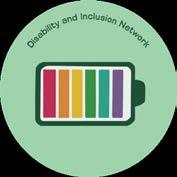

Thousands of doctors across NSW will proceed with industrial action from Tuesday 8th April to Thursday 10th April. It is being led by members of The Doctors’ Union — Australian Salaried Medical Officers’ Federation (ASMOF) NSW. Public hospital staffing will be reduced to public holiday levels as multiple crises in the public health system reach breaking point.
The statewide action is a result of chronic understaffing, low pay compared to other Australian states, and unsafe working hours.
ASMOF President Dr Nicholas Spooner said the Minns Government has failed to take any action and walked away from award negotiations. Doctors have been left with no choice but to strike as their working conditions put themselves and patients at risk.
Hospitals will remain staffed to safe levels, with NSW hospitals operating under public holiday or
‘skeleton’ staffing over the three day strike, according to Spooner.
This is the first time in NSW that both junior and senior doctors from across departments have gone on strike. This is also the first time that doctors in NSW have taken industrial action since 1998.
ASMOF informed Honi that they are currently “overwhelmed by the level of support from ASMOF membership.” More than 30 hospitals across NSW are committing to industrial action, including regional areas such as the Riverina and North Coast.
Patient safety will not be compromised by the strike. Urgent priorities such as emergency departments and critical care units will remain fully staffed. Doctors will not undertake non-urgent duties.
In negotiations, the government has re-offered the same deal from June last year — a three per cent pay raise — despite looming threats
of industrial action. This did not assist in the attaining or retaining of more skilled staff specialists required in the NSW public health sector, according to Dr Spooner.
“We don’t want to strike. We want to care for our patients safely. However, we will not stand by while the NSW government allows the system to crumble. The system is not sustainable, and we cannot continue like this” says Dr Spooner.
“We call on Premier Minns to come to the table and provide the staffing, the conditions, and the respect that NSW doctors deserve. The future of our health system depends on it.”
Spooner says that doctors are leaving the state in significant numbers to work in other parts of Australia due to unsustainable working conditions in NSW.
“We are working dangerously long hours, including 16-hour back-toback shifts with barely any rest,
William Winter reports.
After over an hour of waiting for the doors of the Cullen Room in the Holme Building to open, the public session of the March University of Sydney Union (USU) Board Meeting began.
The first motion of the ex-camera session was to correct all previous minutes to ensure that the late Honi Soit editor Khanh Tran is referred to by the correct name.
The financial report followed. The USU was under-budget for this period, an anticipated loss due to the budgeting calendar being confirmed before 2025 semester dates were released. As it stands, the USU has a shortfall expected to be recouped by the April board meeting. Also expected by then is a final financial audit report for the 2023-2024 period.
We’ll give the USU credit for one thing: the Board is great at keeping us hooked. Who would’ve thought at the start of the year that we’d be eagerly anticipating the narrative resolution of USU Board financial
shortfalls?
Constable took his President’s report as read, touching on the staff town hall regarding incorporation. Honi will note that this public and ‘important’ town hall was not recorded for internal or external sharing. Constable then spoke to the results of the incorporation ‘member survey’ (read: push poll): “members are highly in favour… No individual proposal was below 75 per cent approval.”
We then come to open question time. Honi prepared quite a few questions for this segment of “What do they know? Do they know things? Let’s find out!”
Honi does not believe that the haste with which the Special General Meeting and constitutional changes are being adopted can accurately provide the chance for the USU community to assess the potential constitutional changes.
When asked about what form the USU will be pursuing
and often covering multiple roles due to chronic staff shortages.” Dr Spooner said.
The current conditions of chronic understaffing are unsafe for doctors and for patients.
“Many [doctors] are working 16hour back-to-back shifts with little rest, leading to exhaustion, burnout, and mistakes that put patients at risk.” says Dr Spooner.
“We urgently need safe working hours, including a guaranteed 10-hour break between shifts, to ensure fatigued doctors are not seeing patients.”
Read full article online.
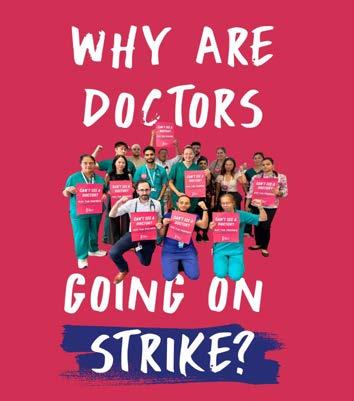
for incorporation, Constable stressed that they will be seeking Incorporated Association.
Honi asked Constable: “Has the incorporation plan been formally endorsed by the Student Representative Councl (SRC), Sydney University Postgraduate Representative Association (SUPRA), and/or the University Executive?”
Constable replies: “Yes. The incorporation plan was endorsed to me by the President of SUPRA, the President of the SRC, and we have in principle support from key members of the University Executive… Joanne Wright has given her in principle support to the model, not just the incorporation plan.”
Honi has confirmed through a University of Sydney spokesperson that “Deputy Vice-Chancellor (Education) Professor Joanne Wright and Chief Governance Officer Michelle Stanhope gave preliminary feedback and general
in principle support for the USU’s proposed direction” for however “no formal constitution has been presented to the University for consideration at this stage.”
SUPRA President Vivian Bai: “I fully respect the decisions made by the USU Board on this matter. However, I would like to clarify that SUPRA Council has not yet had the opportunity to formally discuss or vote on the incorporation plan or the proposed structural changes.”
SRC President Angus Fisher: “I have not in my capacity as my SRC President officially endorsed a plan to incorporate. This is only possible if [the] Council votes to do so. Myself, as an individual, has noted I approved incorporation in principle.“
Honi will note here that the SRC formally voted to not endorse the USU incorporation at their council meeting this week.
Read full article online.
“Abortion Abolitionists” infiltrate campus with anti-women rhetoric, again
Emilie Garcia-Dolnik and Ellie Robertson report.
Disclaimer: Honi Soit does not support the inversion of the term “abolitionist”. These people are right-wing, pro-life extremists.
On Wednesday 2nd April, two men stood on campus with extremist anti-abortion signs, alongside aggressively pushing their antiwomen narratives to students walking past.
Self-titled “abortion abolitionists” held signs reading “Abolish Abortion to the Glory of God” and “Whatever happened to Human Rights?” for over two hours within Campus bounds. The same abolitionists were on campus late last year, where police removed them.
At 12:45pm, NSW police asked the men about their aims. The men then testified to their lack of accountability, loudly claiming “They approached us!” after baiting students into talking with them.
Honi understands that the socalled abolitionists did not seek permission to be on campus. One must wonder why USyd
management and security did not apply the Campus Access Policy (CAP) in this instance, provoking more significant questions about the policy’s selective application by USyd management.
In response to a request for comment, a University Spokesperson provided the following statement:
“Yesterday our protective service team requested council and police assistance...due to concerns about the potential impact of the group’s proximity to campus.
“We would have employed it if the group had moved onto campus as we’ve done previously, as they were not members of our community and did not have approval to gather here.”
Honi notes that at least one of the men was within campus bounds for a prolonged period before police interruption.
Martha Barlow, SRC Women’s Officer, as well as Lilah Thurbon, SRC Environmental Officer, were among those arguing with the two men. Martha said to Honi:
“WE’RE HERE, WE’RE QUEER, WE’RE NOT GOING TO DISAPPEAR!”
On Sunday 30th March, LGBTQIA+ rights group Pride in Protest (PiP) hosted a rally at Pride Square, Newtown to mark the International Transgender Day of Visibility (ITDOV). It was both a celebration and a call to action.
ITDOV held annually on 31st March, acknowledges the perseverance of trans joy and resistance throughout history. It raises awareness for the ongoing discrimination faced by genderdiverse people.
Recent Redbridge polling, has shown almost nine out of ten Australians are against major parties using transgender issues for political gain this election cycle. Protest co-chair and officer at the UNSW Queer Collective Alyss Cachia criticised the eagerness of the Coalition’s to “take up the culture war.”
“It’s disappointing to see the ‘Abortion Abolitionists’ back on campus, but with the current rise in Trumpian rhetoric and rightwing bigotry in the world, perhaps not surprising. It was heartening, at least, to see such a crowd amass to debate, call out and heckle them. When prodded on their beliefs, these people were quick to support abolishing no-fault divorce and openly tell us that women should just “close their legs”.
“They were then offended when we called them misogynists. They also do not believe in contraception or sex education or any measures that would actually make it easier to have children: a very clear indication that all they care about is controlling women’s bodies and criminalising vital healthcare. This kind of bigotry and violent rhetoric has absolutely no place on our campus, and we outright reject the right-wing Christian nationalism they were espousing. Safe, free and accessible abortion now!”
Honi posted a poll on social media regarding how the abolitionist’s presence on campus affects the student body. We received responses in 24 hours from 583
students out of 1,784 viewers where they expressed outrage at their presence on campus. This response is unsurprising to Honi It is interesting that, with this level of disdain and discomfort from the student body, the University did not kick them off sooner.
Read full article online.
If you or any of your loved ones have been affected by the issues mentioned in this article, please consider contacting the resources below:
NSW Sexual Violence Helpline – Provides 24/7 telephone and online crisis counselling for anyone in Australia who has experienced or is at risk of sexual assault, family or domestic violence and their nonoffending supporters. The service also has a free telephone interpreting service available upon request.
Safer Communities Office – Specialist staff experienced in providing an immediate response to people that have experienced sexual misconduct, domestic/family violence, bullying/harassment and issues relating to modern slavery.
Wirringa Baiya Aboriginal Women’s Service – Provides legal advice and sort for a range of issues, including domestic, sexual, and family violence, to Aboriginal and Torres Straight Islander women, children and youth.
1800RESPECT – A service available 24/7 with counsellors that supports everyone impacted by domestic, family and sexual violence.
Greens candidate for Sydney Luc Velez cautioned against the new polling stoking “complacency” in queer politics at the election. Velez insisted that “we cannot let local representatives be silent on transphobia or hide behind excuses.” He cited the Queensland government’s decision to pause puberty blocker medications and the printing of anti-trans ads from Clive Palmer’s Trumpet of Patriot’s party.
Mish Pony, CEO of Scarlet Alliance, spoke of right-wing attempts to “take away [queer] rights and systematically erase us from existence.” This is nowhere clearer than in the United States. Eddie Stevenson, spokesperson from Community Action for Rainbow Rights, pointed out the irony that this is supposedly “the freest, most democratic, most liberated country in the world.”
The massive turnout of protestors marched from Pride Square to the University of Sydney. There, they defied the much-criticised Campus Access Policy that revoked students’ rights to protest on campus without prior approval from university management. National Tertiary Education Union flags flew in support.
The ultimate message of the day was one of joy. The transgender community is still far from the liberation they are fighting for, with restrictions on bodily autonomy, discrimination in healthcare discrimination and sport, and arbitrary detention at borders. Yet, there was a defiant happiness at the 30th March protest.
For Cachia, being transgender is an “amazing, unique experience.” She urged the crowd to “hold each other tightly” as the
Lifeline – 24/7 suicide prevention crisis support hotline for anyone experiencing a personal or mental health crisis.
LGBTQIA+ movement continues to build community and solidarity. Spokesperson ‘Miss Andry’ from the Sex Worker Action Collective NSW said that the rise of antitrans sentiments shows that “right-wingers fear our visibility. They fear the free, loving way that we live our lives, and how that might make others become more introspective and start caring for others in the same way that we do.”
At the conclusion of the event, the crowd was urged to continue the struggle for trans liberation beyond ITDOV and beyond the upcoming election. Grassroots organisations like PiP and the Trans Justice Project are seeking volunteers for community and local action groups.
Read full article online.




Inside Manning House, tucked away in a back corner on the first floor, stands the central hub for the vibrant disabilities student community at the University of Sydney. It’s got two zones: a smaller, quiet zone to accommodate students with sensory needs, and a larger space for socialising. From the panelled walls to the dimensions of the automated door, every design choice has been made with careful consideration to best accommodate students with disabilities.
The Disabilities Community Room (DCR) is to be renamed the Khanh Tran Room in honour of Khanh, SRC Disabilities and Carer Officer throughout 2022-2024 and former Honi Soit editor. When it came to disabilities advocacy, Khanh was a force to be reckoned with. Since starting at the University of Sydney in 2020, they were been involved in disabilities activism throughout their whole student life. There is no better proof of their fight for better access on campus than the USyd DCR.
Activists had been agitating for a dedicated disabilities space as early as 2017. Back then, former SRC Disabilities Officer Noa Zulman, Margot BeavonCollins, and Robin Eames saw an opportunity with the University of Sydney Union’s (USU) relocation of the Queerspace from the Holme building to Manning. When the move was completed in 2018, the USU expressed support for the room to be converted to a disabilities space. That support, however, was rescinded within the year, with the USU arguing that the space was needed for extra storage.





Carmeli Argana writes.
While there have been incremental movements since 2018, progress was largely stalled. Both the University and the USU had expressed their vague approval in developing the space, but a series of bureaucratic hurdles knocked back any attempts to advance the project. The COVID-19 campus shutdown throughout 2020-2021 also saw the University implement a funding freeze for approval of new Student Services and Amenities Fees (SSAF) applications. That included an application for $50,000 for the project, submitted by Sydney University Postgraduate Representative Association (SUPRA) Disabilities Officer Gemma Lucy Smart in 2021.
But things finally started moving along in the following year, with an Honi investigation published 24th April 2022 titled, ‘Such an exhausting process: The yearslong fight for a Disabilities Space on campus’. You can probably guess who authored it.
“Khanh’s article was really pivotal in adding pressure to the University, because it pointed out that USyd was the only Go8 university without a disabilities space,” Smart says.
As one of two student representatives on the University’s Disability Inclusion Action Plan (DIAP) Working Group, Smart recalls how they would constantly refer to Khanh’s article in meetings. The University’s pride worked to her advantage; the purse strings were loosened and the University decided that the quality of the final space should exceed that of the other Go8 members. When the SSAF funding freeze was lifted in 2022, the creation of a dedicated disabilities space skyrocketed to the top of the University’s priority list. And by the time the room was opened nearly two years later, the University had
invested well over the amount of Smart’s original SSAF application into student-led disabilities initiatives; approximately $200,000 according to people with knowledge of the matter.
Khanh’s article also made waves across USyd’s student unions. In the following Student Representative Council (SRC) and SUPRA meetings, councillors unanimously voted in favour of a motion to establish a disabilities space. The USU, which houses the autonomous collective spaces, also made it a priority. When former Board Director Alex Poirier took over the USU Disabilities Portfolio in July, he agreed to take an active role in the room’s development, seizing an opportunity in the planned renovations of Manning House to push the Board for inclusion of a disabilities space. Along with fellow Board Director Grace Wallman, they kickstarted the process for the USU’s own DIAP — the first of its kind for a student union in Australia.
“I went to Khanh when I was starting out with that role because they’d been around in the space for longer than I had, and just knew so much,” Poirier says. Khanh’s article was an important resource for the initial DIAP draft. After the draft was complete, Khanh came in and added suggestions that were more specific and actionable, Poirier adds.
To this day, the original draft is still covered in Khanh’s notes, blocks of pink annotations on an old Google doc.
Khanh continued to support the project throughout 2022, being part of discussions with Office Bearers during the process of securing a location. But they wanted to do more. In November that year, at the conclusion of their term as Honi editor, they ran for




the joint position of Disabilities Officers with Jacklyn Scanlan. They were both elected unopposed.
Disabilities Officer, Khanh went from being a student journalist who could only agitate for change from the outside, to having a seat at the table, with a Disabilities & Carer’s network and collective budget behind them.
During their first term as Officer, they were highly involved in the consultation process for the development of the room. They frequently liaised with various stakeholders across the SRC, USU and most importantly, the University’s infrastructure team, which was responsible for implementing the structural and architectural elements of the room’s renovation. Alongside Smart, they were relentless in keeping the project on track, chasing up the infrastructure team for updates during the process, largely via email correspondence at their prompting. As a former Honi editor, they had an edge in what they brought to discussions. They’d built up a wealth of institutional knowledge from their reporting to understand which pitfalls to avoid from previous officer bearers’ lobby attempts, and the best ways to apply pressure on the University. They were a prominent voice in discussions about the room’s policies as an autonomous space, its accessibility procedures, and its function and design.
In the present day, the walls are lined with acoustic panels to reduce noise and the carpet is a plain navy blue, avoiding bright colours that might affect students with sensory needs.



Powerpoints, light switches and temperature controls are located low on the walls to enable access for wheelchair users. Wheelchair users can also enter the space via the wide, automatic doors that swing open with swipe access. Inside the social zone is an acoustic booth fitted with adjustable lighting and an Australian electric and USB-C outlet. Printed instructions describe the booth as “an excellent place to study or take a break”. An iPhone-quality photo accompanying the instructions shows a picture of the booth taken by Khanh; their unmistakable silhouette — neatly trimmed hair and a pair of jorts — can be seen holding up a peace sign in the reflection of the glass door.
“The end product would not be what it is today without them,” says Grace Wallman, USU Board Director and former Disabilities Portfolio Holder. Along with the SRC and SUPRA office bearers, Khanh relentlessly pushed to ensure that students’ accessibility needs were considered by the University throughout the whole process, she adds.
Wallman took over from Poirier as Disabilities Portfolio Holder in mid-2023. At that point, the room’s renovation had been mostly completed. Wallman describes the care that Khanh took with the office bearers to ensure that feedback for the design proposals were heard; in particular platforming Smart’s feedback on carpet colours, lighting systems, powerpoint specifications. They were also a vocal member of the USU DIAP Development Committee that Wallman chaired, a committee established in 2023 as part of efforts to widen the scope of the DIAP development process.
By the end of the year, the room was ready for its final walkthrough. What had started out as the former ethnocultural space-turnedstorage room, had transformed into a state-of-the-art accessibility room, ready for use. That day, Khanh stood side by side with their fellow student representatives, taking in the fruit of their tireless labour. A room brimming with new possibilities for meetings, for social events, for hanging out with like-minded students. And ultimately, for something more. Something they had gravitated towards their whole life.



When Khanh and Scanlan were elected Disabilities Officers for 2023, they were faced with the impossible task of reviving a collective that had long struggled to engage students following the COVID shutdown. After all, what use was a room if there was no one to use it?
“One of our key priorities was making sure the collective could survive without us,” says Scanlan.
“We wanted people to get excited about the disabilities community and activism. We wanted fresh faces who were really excited about the collective to take over after us.”
Throughout their term, Khanh and Scanlan hosted meetings with guest speakers well-versed in disabilities advocacy, fought to save simple extensions, and held joint solidarity events with the other collectives. During 2023, they were able to double the size of the collective, according to Office Bearer reports submitted to Honi. But with only a handful of members, it wasn’t ready yet for a total change in leadership. When the SRC elections rolled around in November, Khanh decided to run for a second term with collective member and campaign veteran Victor Zhang.
“Having the Disabilities Room was a boon for the growth of the collective,” Zhang says. “For many disabled students, the Room is like a second home.”
Although the room was ready as early Semester 2, 2023, Khanh and other student representatives took their time to make it truly feel like a community space. Smart recalls of their several trips to Broadway together, buying medical supplies and fidget toys to furnish the room. Khanh even supplied lounges with weighted blankets, a tea station with an impressive collection, and snacks to stock the fridge.
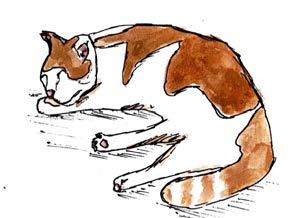



“Khanh is synonymous with DCR because they made it feel like a homely place,” says Smart. “Once we had the room, they made it into the safe and welcoming space that it is.”
The Disabilities Community Room was officially launched on 19th April, 2024. The online feature image of the Honi article about the launch depicts Khanh and Poirier holding a craft store-bought red ribbon between them, while Wallman and Zhang are mid-snip with a pair of big, red scissors. (Once again, take a guess at who the article’s author was) By Zhang’s account, it was a successful event with student representatives, USU administrative staff who were involved with the room’s development, as well as members of the burgeoning Disabilities Collective (DisCo). They’d even invited the Director of Research and Policy for the Disability Royal Commission, Dr Shane Clifton, now the Director for USyd’s Centre for Disability Research and Policy (CDRP).
With securing a space for events no longer a logistical pain, DisCo began to take off. The DCR became the natural headquarters for all community events; teachins with guest speakers, campaign organising for upcoming rallies, casual study meet-ups during exam period. For the entirety of the academic year of 2024, DisCo had regular meetings every week, on par with some of the SRC’s bigger collectives. In September, the collective hosted a poetry night as part of the university-wide celebration of Disability Inclusion Week. Having built strong relationships with the University’s official DIAP Implementation


Group through their work on the DCR, Khanh was able to tap into University funding to fully cover expenses for the party.
When the SRC election season arrived in 2024, Khanh knew DisCo was strong enough to survive them. The fresh faces full of passion and excitement that they and Scanlan had hoped for had finally arrived. With full confidence, they handed over care of the collective to Remy Lebreton and Vince Tafea, SRC Disabilities Officers for 2025.
Tucked away in a back corner of Manning House, the Khanh Tran Room is the beating heart of the University of Sydney’s disabilities student community.
The Room is not yet in perfect shape; the automatic door occasionally malfunctions and locks people in, and student representatives are still pushing for the removal of swipe access as a barrier to entry. But much like the community it belongs to, it’s gone through one hell of a journey for the right to exist. Its very existence is an act of resistance, an act of triumph, an act of love.
Khanh Tran is one of the lucky few who truly spent their life doing what they loved — fighting for the oftenoverlooked communities they held close to their heart, in whatever small ways they could. But their contributions and their impact are far from small. Out of Khanh’s breadth of accomplishments as a disabilities activist, the Room is perhaps their greatest legacy.
Editor’s Note: Carmeli Argana is a former editor of Honi Soit. She edited alongside Khanh in 2022 on the team CAKE for Honi.


Gemma Lucy Smart welcomes the unwelcomed.
Australia has long positioned itself as a welcoming destination for international students and academics seeking worldclass education and career opportunities. However, beneath this welcoming façade lies a deeply discriminatory system that forces many international students and staff with disabilities to hide their conditions for fear of visa rejection or deportation.
At the heart of this is a contradiction within Australian Federal Law. While Australia’s Disability Discrimination Act 1992 (DDA) aims to protect people with disabilities from discrimination, the Migration Act 1958 is specifically exempt from these protections. This means that Australia’s migration laws can — and do — openly discriminate against people with disabilities or health conditions.
All visa applicants must meet the Migration Health Requirement, which rejects applicants deemed likely to result in a “significant cost” to Australia’s healthcare or community services. Currently, this threshold is set at just $51,000 over ten years for permanent visas — a figure significantly below both Australia’s average per capita healthcare expenditure and comparable thresholds in countries like Canada and New Zealand.
For international students and academics with disabilities, this creates an impossible situation:
“It’s like we’re here for you [Australia] when you need us, but when the roles are reversed and we need you, it’s like, nope, sorry, you cost too much money, you go back to your own country,” explains Laura Currie in a BBC article, whose family faced deportation after their son was diagnosed with
cystic fibrosis.
Dr. Jan Gothard, an immigration law expert, notes that these policies create a culture of fear where international students and staff with disabilities feel forced to hide their conditions:
“People are afraid to disclose, afraid to seek help, afraid to access services they need to succeed academically or professionally.”
This creates a double bind for international students and academics with disabilities. Disclosing their disability might allow them to access University support services and reasonable accommodations. However, despite clear confidentiality policies and promises from the University, casual breaches of medical data privacy are all too common. There remains the fear that this same disclosure could potentially flag them for immigration authorities, risking their visa status or future visa applications.
For many, the fear of deportation outweighs the need for support. Students with conditions like ADHD, autism, depression, or physical disabilities often struggle through their studies without accessing disability support services that Australian citizens take for granted. Academic staff may hide their conditions from colleagues and administrators, working without accommodations they’re entitled to under Australian workplace law and the USyd Disability and Inclusion Access Plan.
The situation becomes even more problematic when we examine how Australia’s migration policy treats children with disabilities. Unlike ‘regular’ education or English as a Second Language programs,
which are considered community investments, ‘special education’ is categorised as a community cost in visa assessments.
This means an international academic whose child needs learning support is almost guaranteed to fail the health requirement, regardless of their skills or contributions to Australia. Since approximately half of all visa types have no waiver provisions for the health requirement, families are often simply rejected outright.
The human cost of these policies is immense. International students struggle through courses without needed accommodations, affecting their academic performance, mental health, and future prospects. Academic staff face career barriers and stress from hiding their conditions. Families are separated or forced to leave Australia altogether based on a family member’s disability.
The policy also prevents universities from benefiting from the diverse perspectives and talents of disabled staff and students who could contribute significantly to research, teaching, and campus life.
Civil society organisations like Welcoming Disability, led by Australian Lawyers for Human Rights and Down Syndrome Australia, are campaigning for urgent reform. They call for removing the Migration Act’s exemption from the Disability Discrimination Act, raising the cost threshold to reflect actual healthcare spending, and ending the practice of counting special education as a “community cost.”
The Royal Commission into Violence, Abuse, Neglect and Exploitation of People with Disability has specifically recommended reviewing the exemption in the DDA as it applies to the Migration Act
For Australian universities seeking to be truly global institutions,
addressing this issue is essential. The current system explicitly or implicitly forces international students and staff to choose between receiving support for their disabilities and maintaining their legal status in Australia - an impossible choice that no one should have to make.
As Australia competes globally for international talent, creating a more welcoming environment for people with disabilities would not only fulfill human rights obligations, but also enrich campus communities and attract diverse perspectives currently lost to discriminatory policies.
Until these reforms occur, international students and staff will continue to mask their disabilities, forgo needed support, and live in fear of a system that views them not as valuable contributors to Australian society, but merely as potential costs to be avoided.
Dedicated to the incredible activism of Nguyen Khanh Tran in this area, and their fearlessness in publicly identifying as a disabled international student.











This summer, all prospective beach days and lunch dates were cancelled once I tested positive for COVID-19. With my family overseas for their holiday, I was left to fend for myself in the toughest three weeks of my life. I spent every minute in immense discomfort, wishing I could sleep for more than twenty minutes at a time without waking up with violent coughs and a growing headache. Countless nurofen, tissue boxes, and cups of microwaved soup later, it was clear that this was not “just like the cold”. The impact of COVID on my body was palpable, and the lingering symptoms of Long COVID have not allowed any respite.

Two months on, I have tremendous fatigue, migraines, shortness of breath, body aches, and brain fog. I forget people’s names, I can’t stand for more than ten minutes at a time, and I am constantly aware of a dull pain throughout my body. On ‘good’ weeks, I can manage every second day out at uni for a few hours of class — that is, before inevitably crashing and taking a long nap to get me through the rest of the day. On ‘bad’ weeks, I spend all my time alternating only between my bed and different couches throughout the house, trying to ignore the discomfort in my body whilst also feeling overwhelmed with guilt and frustration at all the things I am unable to do that day. My life has literally been put on pause as the rest of the world goes on: I am now graduating

a year later than planned, I have not been at work for three months, I have had to involuntarily pull out of many projects, and I no longer have the energy to spend time with friends. My life has been completely uprooted.

Long COVID is a chronic condition in which people experience symptoms, sometimes for up to years, after the acute infection. Common symptoms include fatigue, chest pain, and brain fog, but you are also at risk of pulmonary and neurological complications. Furthermore, your immune system becomes permanently damaged by infection — not built up with immunity — meaning reinfection is extremely dangerous. 2022 research by the Australian National University found that 1 in 5 people who get COVID experience Long COVID. Being such a new condition with many ‘invisible’ symptoms, it is extremely under researched. Although much is unknown about Long COVID, we do know that anyone who gets COVID can develop Long COVID. It is a condition only diagnosed by a process of elimination, with no definitively known cure.
Five years on from the first lockdown, things have gone ‘back to normal’. Normal, meaning excess disability and death as everyone goes back to work. But is it really ‘normal’ for a preventable disease to rampantly disable and kill so much of the population? Such violence is taking place precisely because all measures that once responded to the urgency and seriousness of COVID have been axed: isolation is no longer legally required nor encouraged. Infrastructure like free, accessible PCR testing and Long COVID
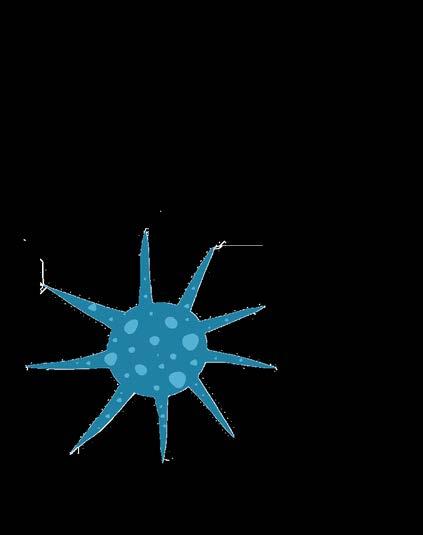
DisCo Mask Bloc
Request N95 masks for yourself, your event, or your group - for free!
clinics have been shut down. Contact tracing is non-existent. Many workplaces — who do not offer sufficient paid sick leave — are demanding we come back into the office, and universities are bringing back stringent and compulsory in-person class attendance requirements for certain courses.
The state’s disregard of the risks and spread of COVID should not be surprising — the cost of previous safety measures on the economy was far greater than the cost of people’s lives. This is neoliberalism manifest, which we see elsewhere in healthcare: bulkbilling services have practically disappeared, hospitals have dangerous staff to patient ratios, there have been immense cuts to NDIS funding, trans healthcare is being denied to Queensland youth and in amerikkka/Turtle Island, and abortion access is increasingly fraught.
Disease is political. And a state-sanctioned pandemic is eugenics.
We must refuse to normalise mass disablement. We must refuse to be complicit in mass death. We cannot exist in the world acting as if disabled lives are disposable. The pandemic is not over. We ought to care for each other to prevent the spread of COVID, especially when the state refuses to intervene.
The best way to protect yourself (and others) from COVID and its complications is to not get COVID at all. Handwashing alone will not save you — it is time to start masking up again. You should reintroduce masking practices


in healthcare facilities, on public transport, at the supermarket, at concerts, and at protests. Consider even your lectures — how many times a week are you sitting in a packed room with hundreds of others for two hours? I can assure you that the slight inconvenience (or even embarrassment) of wearing a mask is much better than the inconvenience of becoming disabled with Long COVID.
It’s not just about yourself: with each precaution you choose not to take, you are telling disabled people that our livelihoods are not worth protecting.
Invest in N95s and KF94s. To save money in the long run, buy them in bulk through your households, workplaces, and organisations. The Disabilities Collective is launching a mask bloc which distributes masks to any individual or group at the University of Sydney who requests them — scan the QR code below.
You are not guaranteed good health, especially when you do nothing to prevent infection during a pandemic. Your carelessness about COVID will come at my (and your) peril.


I got my first period early, when I was 9 years old. It was long before any of my friends got theirs, and as a result took my mother and I by surprise. She had assured me that I wouldn’t start bleeding each month until I was older, 13 or 14 like she was.
The next two weeks were spent writhing with pain on the yellow tiles of my bathroom floor, disgusted by the thick blood that seemed to flow from me endlessly. My back ached sharply and constantly with pain that I sometimes felt so deeply it penetrated my chest. When I dragged myself out of bed, I was scared my legs would give out.

Lilah Thurbon discusses pain.
This is the first of many painful episodes I would later make sense of as endometriosis.
Endometriosis is a chronic condition in which tissue, similar to uterine lining, grows outside of the uterus. This causes lesions and scarring to form most commonly in the pelvic area. Still, there have also been documented cases of endometriosis found in the lungs, diaphragm, and in one extremely rare instance, the brain.
Well-known symptoms of endometriosis include chronic pelvic pain, heavy periods, bloating, pain with penetrative sex,and infertility. Endometriosis is also a very common disease, affecting approximately one in seven people with uteruses (and occasionally people without them too — endometriosis can recur even after a hysterectomy). Despite this, there is no known cause, no cure and no way to prevent it. The average time period between the onset of symptoms and receipt of diagnosis is six to eight years.
This is caused by structural medical misogyny, where women and gender minorities’ voices are dismissed by doctors and their pain minimised.
The gender research gap exacerbates this problem, with General Practitioners (GPs) and even gynaecologists often having outdated or incomplete knowledge about women’s health conditions. The only option for definitive diagnosis is a laparoscopic surgery, which is invasive and expensive. It’s not even curative — the endometriosis lesions they cut out will probably grow back. As a result, people often spend years in limbo, waiting on a diagnosis and trying to manage their symptoms with blunt instruments like the contraceptive pill.
The overreliance on hormonal birth control in the treatment of endometriosis is complicated.
Many women, including myself, rely on various forms of hormonal birth control to maintain a functional quality of life. I know that without my IUD, I would be frequently incapacitated by flare-ups.
I started taking hormonal birth control when I was 14. The preceding three years of heavy periods, each over a fortnight in duration, that left me anaemic, anxious, and frequently physically incapacitated from cramping and back pain. I was prescribed a combined oral contraceptive pill, Evelyn, with the promise of a lighter flow and reduced pain.
In the years that followed, I’ve switched pills once, had surgery for endometriosis twice, seen three gynecologists of varying quality and had a hormonal Mirena IUD inserted into my uterus. In desperation, I tried everything from diet changes to yoga and supplements, less because I believed they’d work, and more because I had run out of options.
Some alternative remedies helped manage symptoms or boost my overall health, but the most effective interventions were those backed by conventional medicine. Since my second surgery and IUD, I’ve been free from the disabling period pain that defined the decade before. I know this isn’t the end — many need ongoing surgeries as endometriosis returns. There’s no simple fix, but after years of being dismissed, receiving real treatment felt almost curative.
My first prescription for the pill was presented as a complete solution, even though I remained clearly symptomatic. When it stopped working and my pain worsened, I had to fight for further care. I was offered only opioid painkillers, to be used sparingly due to addiction risks — despite the fact my pain was chronic and constant.
This experience is disastrously common. Women and gender minorities are repeatedly and painfully failed by medical institutions.
Only recently has the government begun funding endometriosis research. The 2024 National Action Plan for Endometriosis revealed that two-thirds of women face healthcare discrimination. A promised $500 million in funding, largely thanks to pressure from Greens-led inquiries, is welcome, but overdue.
This recent spotlight on medical misogyny and the chronic under-resourcing of research into conditions affecting women and gender minorities is obviously a welcome departure from the previous status quo, where menstruation and period pain were taboos women were told to just get over. But increasing funding and visibility is only part of
the solution.
So much of medical misogyny is perpetrated by individual interactions with doctors and other medical professionals, and compounded by how our society fails to aptly grapple with gendered pain. Being labelled as ‘hysterical’ or a ‘drama queen’ by medical professionals deters women from seeking treatment that could alleviate their pain, drawing out diagnostic processes unnecessarily by years.
Even with a diagnosis, endometriosis remains misunderstood.
It’s often dismissed as a ‘bad period’ but its impact runs far deeper.
It isolates you not just from others, but from yourself. Many with chronic gynaecological pain don’t identify as disabled, even when their lives are deeply disrupted. For women and gender minorities, already alienated from their bodies by misogyny, chronic pain intensifies that disconnection.
As a cis woman, I often resent my anatomy for causing pain and for being a site of oppression. That tension makes it hard to name this as a disability, even when it clearly is.
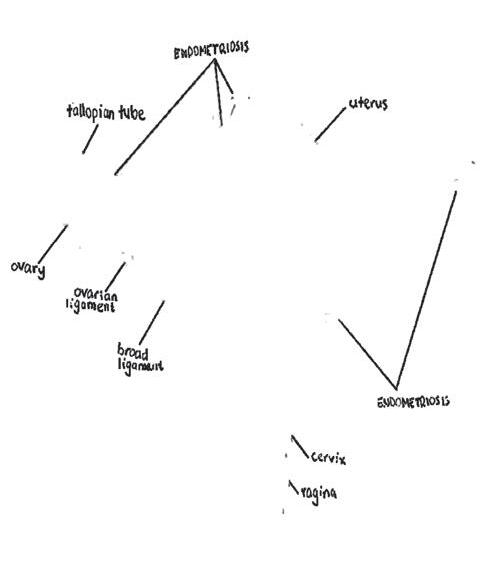
Art by Mahima Singh
This isn’t a hopeful ending, but it’s honest: pain is personal and political. More research and treatment are vital, but without addressing structural misogyny, they’re not enough. We need to believe and listen to those who live with it.
Read full article online.

Tanish Tanjil is tired of waiting.
When the flood came, no one came for my grandmother.
She had broken her femur three years earlier and never walked again. Her leg had twisted into something uncooperative, rigid, untrusting. We made her a bed in the highest room of the house, which was not very high at all. We packed bags, not knowing if we would carry her or leave her behind. As the water climbed the steps in Bangladesh that year, my parents did not cry. They planned. The kind of planning you must do when the state has forgotten you.
This is what climate disaster looks like for disabled people: isolation, improvisation, abandonment.
In countries like Bangladesh and India, disability often means being confined to a bed in a shared room, on the second floor of an uncemented house, in a village no one can find on a map. It means your wheelchair rusts in the yard. It means you depend on your family for every movement, every meal.
Climate disaster does not just expose inequality. It manufactures it. Again and again, climate change becomes a pipeline into disability, and a trap for those already there.
The number of disabled people rises after every flood, every cyclone, every emergency that leaves behind injury and trauma. Climate change does not just impact disabled people. It creates disability. Extreme heat leads to heatstroke. Rising waters cause infection. Collapsing infrastructure causes physical injury. Displacement results in psychological trauma. Warmer temperatures accelerate the spread of diseases like dengue and cholera. Cyclones leave survivors with lasting Post-Traumatic Stress Disorder.
Yet, most disaster response plans do not account for existing disabled people.
When disaster strikes, no one comes for you. Not the state. Not the neighbours. Sometimes not even your own family. So, you
stay. You drown. You are mourned quietly, if at all.
The United Nations says disabled people are two to four times more likely to die in natural disasters.
A 2020 study in the International Journal of Disaster Risk Reduction found that most cyclone shelters in Barisal were inaccessible to those with mobility impairments. Evacuation drills often excluded people with disabilities altogether.
In Gaibandha district, 60 per cent of disabled residents had no access to early warning systems. Megaphones failed the deaf. Written warnings missed the blind. None of it reached those without formal education or assistive devices.
This is not a coincidence. It is a pattern.
I think about the disabled child who drowned in Hurricane Katrina because her family could not evacuate in time. About elderly residents abandoned in flooded care homes during Japan’s 2018 heatwave. About my own grandmother, whose life depended not on infrastructure, but on my parents’ impossible choice: to carry her, or to lose her.
But we do not talk about this.
We talk about carbon emissions and sea levels in abstract terms, as if the climate crisis isn’t right here, right now at our doorstep. We talk about vulnerable populations without asking who we made vulnerable in the first place. We praise the strength of communities after disaster hits, but we ignore the deep inequities that shape biopolitics; who lives, who dies, and who disappears from memory.
Climate change is not just a carbon crisis. It is a crisis of privilege.
Bangladesh makes up less than one percent of global emissions, yet we are on the frontline. Richer nations with the power to reduce emissions and invest in equitable adaptation are still debating whether to act; building walls instead of bridges, profiting from the fuel that floods us.
When Bangladesh drowns, because that is the fear that sits in my gut every time I look at satellite rainfall maps, I wonder who will care. Not about the economy. Not about the infrastructure. But
Art by Tanish Tanjil

about the people. The disabled grandmother who cannot climb stairs. The child who uses a wheelchair. The stroke survivor who cannot run.
But that’s not the whole story. Because disabled people are not just vulnerable. They are architects of survival.
If climate justice doesn’t centre disabled people, it’s not justice. It’s an illusion.
Across the Global South, disability-led climate initiatives are emerging. In Vanuatu, peerto-peer evacuation plans are designed around real bodies — not ideal ones. In the Philippines, grassroots groups are distributing inclusive emergency kits packed with medication logs, sensory tools, and visual guides. In Bangladesh, organisations like Access Bangladesh Foundation and the Centre for Disability in Development are training first responders and community members through DisabilityInclusive Disaster Risk Reduction (DiDRR) programs. These workshops simulate floods, evacuations, and sheltering from the perspective of people who are blind, wheelchair users, or neurodivergent. They ask the question no one else seems to: What if the most excluded person had to be the first to survive?
As disability activist Shamima Akter said in a recent workshop in
Shariatpur:
“We don’t want to be protected. We want to be included in the plan.”
If climate justice doesn’t centre disabled people, it’s not justice. It’s an illusion. Accessibility isn’t a ramp tacked onto a broken staircase. It must be the foundation. That means funding disability-led research. That means rewriting disaster protocols with disabled people at the drafting table. That means treating accessibility not as a favour, but as a right.
My grandmother survived that flood. But only because my parents chose to stay. That choice — between your mother’s life and your children’s — is one that no family should ever have to make. Yet, that’s the unspoken reality for millions. Climate disaster is not a great equaliser. It is a magnifier of all our failures — of inequality, of ableism, of systemic neglect.
We say “no one left behind” like it’s a promise. But right now, it’s a lie.
I’m writing this because I’m tired of this lie.
If you’re building climate policy, centre disabled people. If you’re funding disaster planning, fund disability-led groups. If you’re telling stories — tell ours. Loudly. Urgently. Before the next storm hits.
The water is rising again, and the stairs haven’t
moved.















According to Julie E. Maybee in her book Making and Unmaking Disability, the Middle Ages could be highly accommodating to disabled persons. Citing Metlzer, she quotes “[Labour was often tailored] according to individual (dis) abilities”, and all people were actively included in social and economic life. In stark contrast to our late stage capitalist world, the rise of oligarchic and far right movements in the USA and around the world marginalise people on the explicit basis of perceived productive capacity and the rejection of Diversity, Equity, Inclusion, and Accessibility (DEIA), with the disabled as clear first targets. So what changed from feudalism to capitalism to change these standards?
social model
Despite its relevance, disability justice is often an afterthought within broader social justice movements. However, no one is immune to disability. It can happen to anyone suddenly, at any point in life, yet is siloed to the realm of policy lobbying and liberal identity politics. Underneath this is the belief that disability is independent of social construction; located ontologically as a medical essence of the individual.
This could not be further from the truth. The social model explains disability as not an individual deficit, but rather a result of the systemic ways our society privileges particular kinds of accessibility and being, while marginalising others through inaccessible environments and discriminatory norms. But this leaves the question, why does society
privilege certain kinds of being?
Why is it that those whose bodies and minds are capable of the highest economic productivity with minimal accessibility requirements are located as the norm, and others as deviant? At its worst, we can see these logics, weaponised in biopolitical moralisations, reproduced in the structural violence of ableist healthcare policies or horrific events such as the Holocaust , dictating who lives and who dies.
The Marxist model adds to this framework an additional dimension of analysis — ‘The Economic’. It reframes these social structures and barriers as particular to capitalist economic structures and the exploitation it necessitates.
Capitalism is to blame.
Capitalism is a system of massdisablement. The exploitative conditions needed to perpetuate its cycle require able bodies, best suited to material needs of capital accumulation, with low social reproductive and welfare needs. It privileges certain forms of being based on how well they reflect this. Barriers of exclusion then become embedded within requirements stipulated for labour, and further within the disabling nature of the labour carried out. Its mode of production favours the kind of social organisation that incentivises disablement and ableism.
Viewing disability within the social model as merely representing those who fall outside structural normativity and accessibility can,
Remy Lebreton and Victor Zhang rage against the system.
therefore, be fairly misleading in a vacuum. This exclusion is not the result of neutral, random misfortune, but rather deliberate social and institutional choices. It is, in many cases, the clear byproduct of our broken system.
We need Revolution!
Marx himself identified the need for ever-increasing profit as inherent to capitalism. Without reinvesting profit into capital, the market economy inevitably withers. The tendency towards downward pressure on wages and employment to increase profits, ultimately reduces them. There is less money to be spent from wages earned, therefore less profit. Capitalism is functioning exactly as intended when it maximises profits in contrast to deteriorating conditions — as it squeezes blood from the stone at the expense of all other concerns, including disabled people, or anyone else’s wellbeing for that matter.
Alienation from the labour process, produced by this cycle, “destroys the integrity of the labouring body” according to David Harvey in his 2000 book Spaces of Hope. As workers are required to work harder, faster, and under worse conditions, they grind themselves down against the unforgiving and mechanistic system, extracting every last mote of productive capacity. No longer able to perform to normative standards, the system discards them. Disability then becomes a convenient excuse to fulfil the pressure towards unemployment required for the system to function, naturalised as a normal rate of unemployment.
Our house in Rizal was small but full. Four people lived within its walls: me, my Mama, my Lola (grandmother), and my Tita (aunt). But only one truly moved freely. My Mama was the axis around which our household revolved, a reality I failed to appreciate until much later.
From my earliest memories, my Mama’s day began before dawn. She would wake me for school, prepare my uniform, and ensure I had breakfast. But her morning had only just begun. Upon returning home, she would help my Lola out of bed, her curved spine making each movement
a careful negotiation. Then she would assist my Tita, whose limited mobility from childhood meningitis required patient attention.
Our sari-sari store provided our modest income. My Tita served as the shopkeeper while my Mama handled restocking, accounting, and inventory between cooking, cleaning, and attending to everyone’s needs. My uncle sent money to help support the household.
The hilly terrain of our neighborhood confined my Lola and Tita to our home. This barrier meant outings
The material and living conditions afforded to those in the productive classes of Marx’s time were abysmal, and these would frequently cause sickness and injury — even when such harms hadn’t already occurred on the factory floor. Whilst the average conditions in the Western world have improved significantly, do not be fooled. The disparity between the access to care services and healthy conditions between the top and bottom economic statuses in our society remains abysmal, not to mention the unimaginable suffering that the Global North imposes upon the Global South through expropriation.
Imperialism is of particular note to this, especially where colonial projects themselves function as mechanisms of genocide and mass disablement, as exemplified by Israel’s mass murder of Palestinians. Capitalism necessitates racism, sexism, queerphobia, and environmental destruction as they intersect with disability, in order to justify and excuse the conditions needed for its perpetuation and the escalation of its exploitation.
Capitalism cannot exist without exploitation. Its existence requires ‘othering’, and the sickening calculus of human capital. Policy and welfare can certainly ameliorate ableist conditions, but it will always inevitably manifest more when the profit motive demands.
Disability justice needs more than lobbying, it needs a revolution.
Marc Paniza unravels the invisible labour that shaped his childhood.
were rare, something I failed to consider when I complained about our lack of vacations.
I remember one summer clearly. My schoolmates shared stories about beach trips, and I came home full of demands. “Why can’t we go somewhere nice for once?” I whined. My Mama patiently explained the complexities: the logistics of transporting my Lola and Tita, the financial constraints. But her words passed through me unabsorbed.
It wasn’t until later that I realised: if I was itching to see beyond our walls,
how must my Lola and Tita have felt? My Lola passed away in 2013, having rarely left our home since 2008. When I visit beautiful places now, I often imagine my Lola’s reaction, what joy she might have felt seeing such sights.
The chamber pot or arinola sits in my memory, as a symbol of our daily adaptations. When friends visited and spotted it, their teasing was merciless. The shame led me to stop inviting friends over.












The humble doctor’s note. A magical beacon of hope for the disasterstricken student, who, on the day of their big exam finds themselves tragically struck down with a brief yet debilitating illness.
As per the University of Sydney’s special considerations policy, students who miss an assessment due to illness or misadventure have “no longer than three working days from the original assessment due date, the sitting date of the exam, the date of the missed class or missed placement” to submit their supporting documentation. This includes a Professional Practitioner Certificate, a medical certificate containing the same information, or a student declaration proving your exemption from a medical certificate in “extenuating circumstances.”
Sure, that may sound like a lot to achieve in three days, but we don’t want people faking sickness to get out of exams, do we? All in all, it sounds reasonable, right?
Well, not quite.
The doctor’s note works quite well if illness or misadventure lasts long enough that it’s not solved before you get a chance to see a doctor about it, but isn’t so debilitating that it prevents you from going to the doctor in the first place. Less fortunate are those of us with self-managed chronic conditions or disabilities which flare up unexpectedly — where consequences are infrequently serious enough to warrant going to the doctor, but serious enough that they may well cause you to miss an exam.

My Mama’s life as a caregiver began long before I was born. Her sister contracted meningitis during primary school, upending their family. Mounting medical costs forced the closure of my Lola’s restaurant. My Mama eventually abandoned her university studies due to financial constraints.
I’m type 1 diabetic, which at my age, level of independence and the level of subsidies on my medication and equipment means that most of the time, managing my diabetes is fairly easy and uneventful. But every now and then I have low blood sugars overnight and sleep through my glucose alarms, or I sleep at a weird angle that bends my cannula and I wake up to find I’ve not been receiving insulin all night. These things have simple fixes — sugar, insulin, and a bit of time — all of which I usually have on hand. This is the case for many chronic illnesses and disabilities. People experience flare ups of pain, bouts of depression or anxiety, episodes of fatigue things which to us are expected, manageable, and not warranting a doctor’s appointment, but temporarily prevent us from attending to our responsibilities. Even if I did want to go to the doctor, and I don’t mean this as a slight on the profession,
General Practitioners (GPs) tend to know very little about diabetes. Sure, they understand that my pancreas doesn’t produce insulin, but they know very little about the day to day management.
to understand how someone could need a wheelchair one day and not the next. Ambulatory wheelchair users face stigma and prejudice, often being accused of being lazy or faking it. Emblematic of a broader mindset, distrust of disabled people and our ability to judge and make decisions about our own needs is all too common — including when we need to go to the doctor.

Infantilisation when it comes to doctor’s notes is the tip of the iceberg. With a three day window, ‘just going to the doctor’ is easier said than done. For a start, it’s almost impossible to get an appointment within three days, especially with your regular doctor. This means calling around your local (or not so local) GPs, or sitting at a medical centre for hours on end, neither of which are particularly pleasant experiences when you’re sick. This problem has become even worse in recent years, with wait times for GPs steadily increasing, and bulk billing becoming an increasing rarity.
It’s hard for non-disabled people to understand the day-to-day experience of living with a disability. The fluctuations, the good days, bad days. We see this in the inane and repetitive discourse about ambulatory wheelchair users. Despite the fact that one-third of all wheelchair users have some level of mobility, people struggle
By the time I entered the picture, caregiving was the constant thread running through my Mama’s life. Every moment was dedicated to others’ needs: cooking, cleaning, assisting with mobility, managing medications, running the store, and raising me.
When my Lola passed away, my Mama moved to Australia. The irony wasn’t lost on me when her employment became aged care. She completed a certificate, joking that she hardly needed “a stupid certificate” for work she had been doing her entire life.
This leaves a space open for online telehealth doctors, who can promise you a sick note in 60 minutes for just $19.99! Yet for all the fears of people faking their illness, I don’t think these doctors investigate all that hard when you ask them for a sick note.
And to be honest, I don’t think faceto-face doctors investigate all that hard either when you ask for a sick note. At the end of the day, a doctor’s
I remember dismissing my Mama’s enthusiasm after her first professional manicure in Australia. Now I understand. These moments represented something she had rarely experienced, time dedicated solely to herself.
The household of my childhood was shaped by disability: our routines, our space, our finances, and my Mama’s life trajectory. She never framed her life as a sacrifice. They simply were the reality she navigated with grace.
Looking back, I see the constellation of accommodations that filled our home. What I once viewed as limitations, I now recognise as evidence of profound love. My Mama’s caregiving wasn’t just work; it was the expression of

note isn’t proof that you were sick; it’s proof that you went to the doctor and asked for a sick note.
Yet, in the face of all of this, the university made proposals last year to reduce the three day window to zero — so if we felt this was a lot to achieve in three days, you now have to get sick, get better enough to make it to the doctor, find an appointment (or sit in a medical centre for hours), attend your appointment then submit all your documentation in the space of one day.
This is a direct consequence of refusing to listen to and consult with actual disabled people. The issue lies in the fact that many of these decisions are being pushed through university management by people who have never had to make an emergency doctor’s appointment, and if they did, would have no trouble paying out of pocket.
Of course universities need some level of assessment and standardisation. Courses and accreditations would fall apart if there were no standards to hold students to. But if universities fail to make reasonable concessions to people with disabilities, they fail an enormous portion of their student body. This ultimately excludes disabled people from accessing higher education, and means we are doomed to continue perpetuating social structures which routinely discriminate against and exclude disabled people. This is not to pin the blame of systemic ableism entirely on the doctor’s note — but if we’re looking for somewhere to start, it sure is an option.

her deepest values.
The tragedy may be how invisible this work remains, how easily a child could grow up within it and still fail to truly see it. But perhaps that invisibility is also evidence of its success, care so seamlessly provided that it could be taken for granted.

I was born with a congenital disease called ‘Spina Bifida’. My case was said to be rare — diastematomyelia — and although I have no recollection of what my parents went through, it is astounding that I am more able bodied than doctors expected I would be. Spina Bifida is a type of neural birth defect, where the spine and spinal cord do not close properly. It is thought that family history and not enough vitamin B-9 (folic acid) may cause Spina Bifida, however the cause is not exactly known. There are three main types of Spina Bifida:
1. Occulta — A small gap in the spine, and usually does not cause any disabilities.
2. Meningocele — A sac filled with spinal fluid comes out of the opening, and can cause minor disabilities.
3. Myelomeningocele — A sac filled with spinal fluid and part of the spinal cord comes out of the opening. This can cause moderate to severe disabilities, such as not being able to move the legs.
by


disabilities as well as chronic bladder and kidney infections. As first time parents, they still made the difficult decision to continue with the pregnancy. My first surgery was at two days old to close the opening in my back. The second surgery was at three years old to remove the bony spur. My parents were told that even if these surgeries were successful, there may be disabilities that I would develop later.
Growing up, I was slower than most kids. I had a huge scar on my back that I’ve since learnt to love. At around 11 years old, I wore a cast on my left leg. My condition

I was born with meningocele which is minor. However, I was diagnosed with diastematomyelia – which is an associated condition under meningocele. My spinal cord was split in half by a bony spur. It is difficult to determine the severity of this condition during prenatal diagnosis. My parents were told that I may need to use a wheelchair, develop hydrocephalus (a buildup of cerebrospinal fluid that can cause brain damage), develop tethered cord (that would prevent normal movement of the spinal cord), or have learning
resulted in some of the nerves in my left legs to be weaker. My foot and calf were smaller as the muscles atrophied, and I couldn’t stand on it properly. This large cast that I had to lug around in school meant that I had to wear ugly wide shoes and couldn’t cross my legs. Many people pointed out the way that I walk. I couldn’t help walking a little weird — my pelvis is tilted to accommodate my weaker leg. I often felt belittled, as teachers pitied me and I would sit on a chair unlike my peers on the floor. I would get stares and
ignorant questions about this plastic cast. Some would kick it like a toy. Every year the teacher would celebrate the student with the most remarkable attendance — reminding me that my attendance record was never 100 per cent as I would visit the Spina Bifida clinic for checkups for my casts, my back, and legs. I noticed that these experiences as a child meant that I didn’t fit in with the other kids.
How does my disability affect me today?
I am incredibly grateful for the support from The Children’s Hospital helping me through my developing years. It was rough to experience as a child, but due to the cast on my foot, I am now able to walk without any aides. I do have minor issues such as back pain and foot pain. I am thankful for the life I have today. It is a privilege to experience living. It’s wonderful that my body has adjusted to accommodate my shorter leg and has learnt to live amongst these ‘abnormal’ dimensions. It would raise more challenges if I required a wheelchair, but I know it would still be a privilege to experience living.

medical malpractice if the doctors did not advise of the possibilities, and may have been taken to court for a wrongful life claim. The ethics of letting their child into the world just for it to suffer is something my parents had to decide. If I did end up in a wheelchair, I know I would have been supported throughout my growth. I was privileged enough to be born to parents who will always support my health issues, as well as being birthed into a supportive hospital. In modern medicine, a wheelchair is the ‘cure’ to a ‘problem’ that disability imposes on a person. However, this focus on individual ‘improvement’ does not extend itself to removal of barriers in society. Most places aren’t wheelchair accessible, and getting around in this society is catered more to able bodied people.
If my parents ended up following through with the abortion, it would mean that in their perspective, the disability is ‘bad’ or a burden, and that it is easier to get rid of this issue altogether. Deciding to abort is ultimately their choice. In the conflict between raising a child with a disability versus aborting to have an easier life, my parents did not care about the severity of the disability and had trust in modern medicine. There are people in similar situations who may not have the capability to raise a
During this investigation into my condition my mother expressed that only one doctor encouraged her to follow through with the pregnancy. She also stated that most of the doctors were in favour of abortion. This led me to think — are pro-life ideologies and not aborting a stunted fetus mutually exclusive?
The doctors provided the information to my parents. There is a ‘risk’ continuing this pregnancy. It would be considered
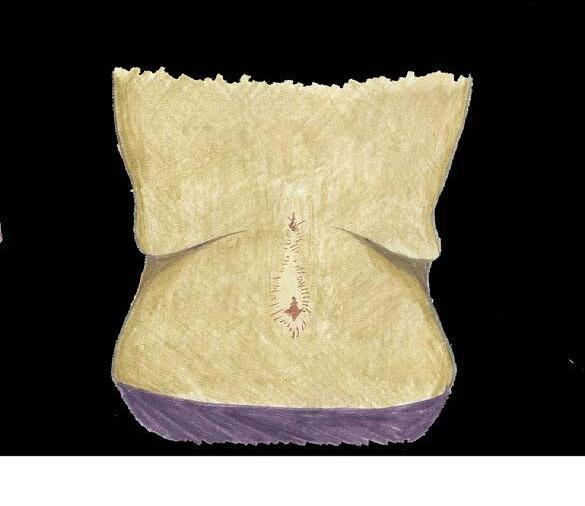
into bodily autonomy and parents should have the choice to decide.


Vince Tafea shares his first depressive episode in five years.
2024 was marked by many of what some may term ‘canon events’. I attended my first protest, independently stayed at the encampment for four weeks (shout out Otis), was able to grow a nonpatchy beard for the first time, got heavily involved in student activism, and had my first major depressive episode in five years. I’d love to eventually talk about all of these and their unique esoteric intersections, but this article will primarily be focused on the last two points.
I never planned to get involved in activism. There was no sophisticated marxist framework or rationale for doing so either. My analysis was the following: children are getting bombed, shot, and starved in the concentration camp of Gaza and I need to do something. I would never forgive myself if I didn’t. This started with the encampment, but quickly progressed into joining other actions. It felt like if I wasn’t going to SOMETHING I was failing as a person. But here is the thing: there is always something to attend. Always a reading group to go to. Always things to learn. I have been blessed with comrades that understand and prioritise my health and wellbeing over what I can do for them or ‘the movement’, but it has personally been hard to internalise this. It’s interesting looking back on my behaviour and attitude at the time. Some of my most cherished hobbies such as song writing (plug: @vincetafea) felt like a waste of time because it didn’t do ‘something’. So I didn’t do it. And, after months of unsustainable participation, I had my first depressive episode in five years.
It is somewhat abstract if you’ve never experienced it before, so let me try to give you insight into my personal encounters with DSM5-TR Depression™. Most people have a notion of feeling ‘burnt out’, or going through a ‘rough patch’. Imagine that, but:
• Some of the most cherished activities and hobbies you
have simply do not bring you pleasure. Your favourite songs can no longer be differentiated from white noise.
• The simplest of tasks, even things like getting out of bed, now require herculean amounts of effort. Instead of you sitting on the world it feels like the world is sitting on you.
• You feel worthless despite any evidence to the contrary (wait, I’m goated).
• You constantly think of killing yourself and the philosophy of suicide suddenly becomes one of your niche academic interests.
Let me introduce you to a model that can help make sense of it all that I learned in therapy and my psychology major.
In psychology, we have something called the diathesis-stress model. Broadly, it posits that everyone has the capacity to experience things such as depressive episodes and other psychopathologies. However, whether these develop or manifest is a function of vulnerability (diathesis) and stress.
Think of yourself as a cup.
How much that cup is initially filled can be thought of as vulnerability. This is determined by things such as developmental factors (e.g., growing up poor, abuse, neglect, trauma), heritability factors (e.g., family history of mental illness), physiological factors (e.g., chronic pain, illness), and more.
How much that cup gets filled in addition is through stressors (i.e., things that cause stress). This is a very broad category, and one person’s stressor may not be another’s. For example, you
might find public speaking very stressful, and someone else might not. Some fairly generalisable stressors can include things like overworking, social ostracisation, poor sleep, carer responsibilities, life changes, academic pressures, an economic system based on exploitation, talking to your reactionary relatives, and more. Most of these examples are quite grand, but a stressor can also be something small too, like seeing a person you sorta know from a tutorial 3 semesters ago, but being unsure whether it’s the move to wave to them or not. All of this is to say, stressors fill up and are emptied from your cup as you move about in the world.


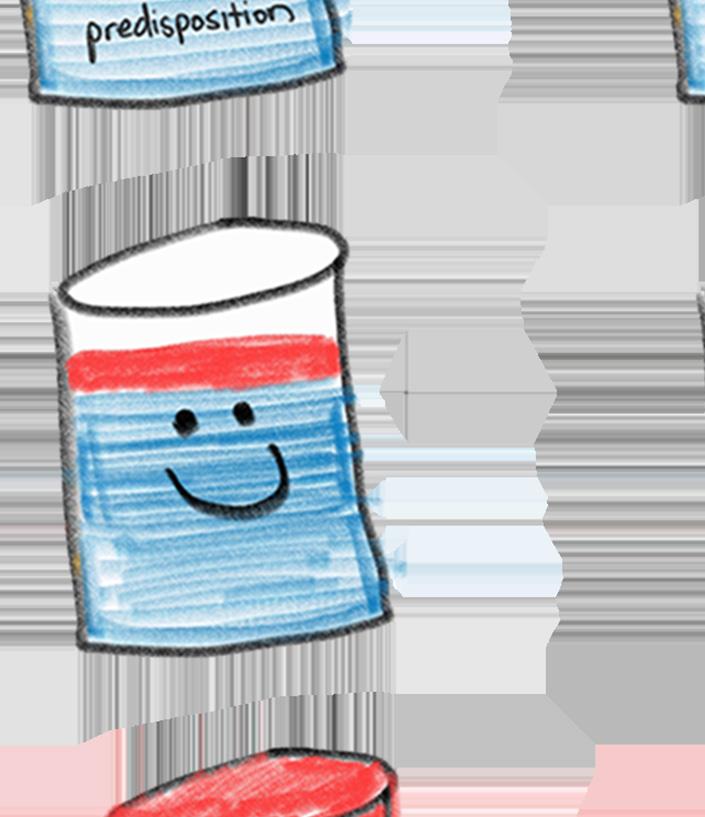
It’s not really implied in my explanation of the model, but yeah, most people’s ‘burn out’ periods don’t involve suicidal ideation. In a way I don’t really have to spell out, it’s not healthy or conducive to a long experience on earth in this mental state.
That is, the consequences of the cup overflowing can be a bit idiosyncratic across people. I would like to reiterate that the major stressor of attending everything and ‘showing up’ to everything was not externally driven. It was internally motivated.

But, I’ve learned a hard lesson that it can be counterproductive. You can’t help or contribute anything when your cup is overflowing. Sacrificing your own health in the short term is not a great service to any sort of goal.
My disability and predisposition make it both easier for my cup to overflow, and the consequences of such overflowing quite debilitating.
So, if you see me around a bit less, I’m focusing on my cup!













More grams to the scale
What does it mean?
When it rains
Or you feel it softly in your hands
Take and take
It’s so absurd
You smile as your skin burns.







Reflected back to you in the eye of atlas





Remy Lebreton
The plates shift again
What’s a little more?
When the warmth fades






Or you feel it breathing on your chest
Refracted in refrains of Orpheus List and sway It seems unreal
Bones break with a sigh.
( )
Jessica Louise Smith
A hand cascades toward a pine table, Arriving with crooked necks And beady eyes. A bang.
Left unexcused with no ‘excuse’, No foreword or author’s note. Carefully crafted LitCharts analysis Will not ‘explain’.
I dare you to soundtrack this. What melodies do you hear? Are they consonant with ancient rhythms, With songs sung To empty rooms and Baker-Miller walls?









What’s more sand to the pile
Or pain in your ribcage
There is only the wheel Life doesn’t stop, Sometimes it doesn’t start.
This is the happiness money can buy. This is the clarity of an eyeglass. This is the crisp taste Of filtered water and fumigation.
Will you play this to your children? Let them resonate with the dissonance.






Gemma Lucy Smart
I’ve built me a castle Now where to begin
I sit in the corner
My books and my gin









If I could see futures I’d write it all down
But that would mean starting And wearing my crown



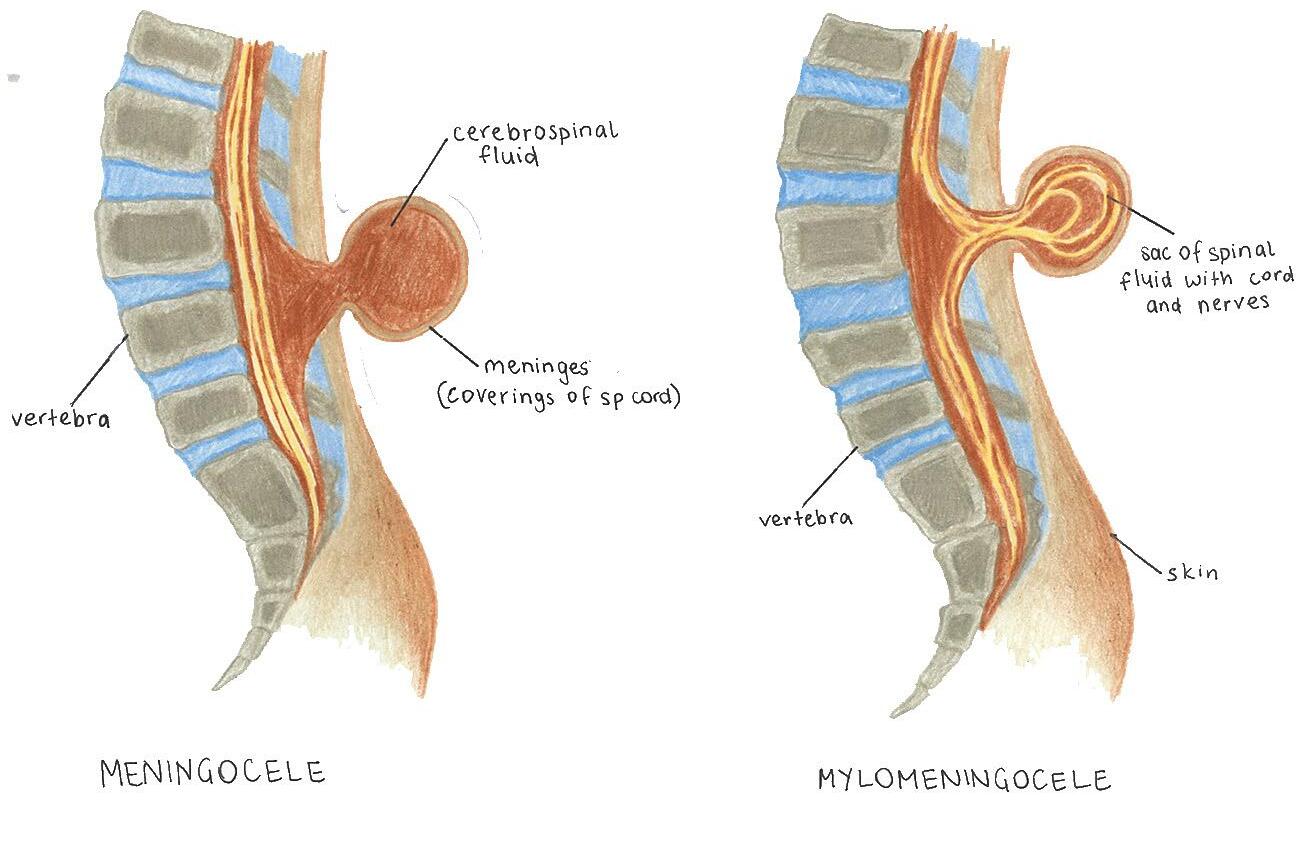
Gemma Lucy Smart
undo the threads of injustice remove every stitch no matter how small no matter the pain you will fall apart for a while held together with tape and tenacity find threads of neon hope sew them into your skin with a needle of fire use your scars as EVIDENCE pull apart your ribs let your heart beat in its cavity release the pressure valve that held you sewn be there for the seeing lean into yourself changed broken reconstructed undo the threads of injustice
Grace Street and Eko Bautista look beyond Western discourse.

On Tuesday 11th March, the University of Sydney’s Poche Centre and Centre for Disability Research and Policy (CDRP) welcomed Dr John T. Ward during the official Australian launch of his new book Indigenous Disability Studies. Hailing from Turtle Island/Canada, Ward is Métis and Non-Status Indian from the Algonquin territory of Kitchisibi, and is a professor, researcher and “knowledge seeker.” Joining us over Zoom was contributing authors Kevin P. Morgan and Lexi (Giizhigokwe) Nahwegiizhic, Ward’s fellow disabled Indigenous advocates and scholars. In addition to Morgan and Nahwegiizhic’s captioned portions on Zoom, an Auslan interpreter was available for audience members.
The launch event was chaired by Professor John Gilroy, a Yuin man from the NSW South Coast and is a professor of Indigenous health and disability at the University of Sydney, specialising primarily in disability studies. The room of students, academics and members of the disabilities and carers communities were welcomed to Gadigal Country by Uncle Charles ‘Chicka’ Madden.
Ward delivered an impressive overview of Indigenous Disability Studies and spent the time providing an overview of each of the more than thirty First Nations scholars and Elders who had contributed chapters to the book about disability in their communities. This amazing breadth of authors included many Traditional Owners across Turtle Island, Taiwan, Indonesia, Malawi, Uganda, and more — each with different knowledge and lore to share about how disability is perceived and supported in their cultures, the impacts of colonialism, and routes for advocacy and representation.
The discipline of Indigenous Disability studies itself is relatively young and unseen in mainstream academia, and this book is starting to change that. By pushing back against the dominance of Western conceptions of disability and bringing together
so many First Nations people endowed with cultural authority and academic backgrounds, Indigenous Disability Studies is not just a book that everyone should read, but that they should keep an eye on as a future seminal text in the discipline.
Delving into the concepts and epistemologies underpinning Indigenous Disability Studies, Ward explained the “Two-Eyed Seeing approach” that uses and accounts for both Indigenous and Western knowledge, worldviews, and ways of knowing. He showed a table comparing Indigenous and Western conceptualisations of disability, emphasising the “very negative” nature of the settlercolonial framework and the more holistic, positive Indigenous knowledge belief system. As an example, he explained how an Indigenous way of knowing and worldview allows the mind to see the land of “North America” as turtle-shaped, as per the creation story that the land was formed on the back of a turtle, leading to the name of “Turtle Island” amongst many First Nations peoples.
Ward displayed a representation of the Medicine Wheel, a “way of understanding who we are” common to his home of Turtle Island. It represents interaction of the four aspects of an individual — physical, emotional, mental, and spiritual — each of which provides a basis for how disabilities are perceived in “Canada.” This model was used to explain an Indigenous, more holistic view of disability and disability was not, and remains as for many people, something that needed to be defined and viewed negatively.
The work and knowledge of indigenous people was historically, and still is, disregarded or blatantly excluded in the field of disability studies, lacking the perspective and experiences of the communities persistently impacted by limited access to modern healthcare, lower socio-

Kevin P. Morgan, born Ronald Robert Joynson/Proulx, is a Sixties Scoop survivor — period of paternalistic policies enabling Canadian authorities to “scoop up” or remove Indigenous children from their families, and give them to white families. Morgan has been legally blind since birth and is of Oji-Cree and French descent, with his ancestral roots found in the Red River in Manitoba and of Chippewa of North Dakota. He spoke of his experience growing up in a Western household and society, before coming to understand his blindness and disability in a non-Western lens, saying “while I cannot see, I have the gift of vision.”
Lexi (Giizhigokwe) is a twospirited, neurodiverse Ojibwe woman from Sheguiandah First Nation in Ontario. Her traditional name is Giizhigokwe, meaning Little Sky Woman. Nahwegiizhic was a softly-spoken but energising speaker, who emphasised feeling the tension between “both worlds” after being recognised




economic status, and ableism. The effects of colonialism still prevail, even in the spaces that speak towards compassion and understanding.
This troubled me growing up on Bidjinura, where I was separated from my family’s knowledge holders. As an Indigenous person from the island of
positively for her differences by her community growing up, then going to school where she was struggling and frustrated from masking and the Western system.

Asking for questions from the room, a productive and open discussion followed with many First Nations “Australians” and others from around the world sharing their gratitude for the panelists validating their experiences and asking questions about their own fields of work. At the end of the event, Ward prepared a special treat with Canadian Maple syrup to share — using the opportunity to speak to the Maple’s importance.
The event perfectly encapsulated the essence and what is to be expected of the wonderful Indigenous Disability Studies — based in respect for and the knowledge of First Nations peoples, focused on community and diversity, and featuring the expertise of those with lived experience who may not be heard as often in mainstream academia or disability discourse. It has certainly solidified the University of Sydney and CDRP as a leader in this up and coming but all too necessary area.
Luzon in what’s known as the Philippines, my understanding of my autism was only informed by Western perspectives and ideals, positioning me in a Eurocentric perspective that was not compatible with the knowledge that I grew up with before settling here. As such, I turned to my ancestral roots for answers.

Grace Street reviews and Indiana Zezovski interviews.
The ABC’s Headliners (2024) is a new five-part series that has raised what was, admittedly, a pretty low bar in disability representation and advocacy in the mainstream media and music scene.
The show addresses the gap of almost 20 per cent of Australians living with a disability but only seven per cent of musicians being part of the disabled community. It is raw and empowering, with
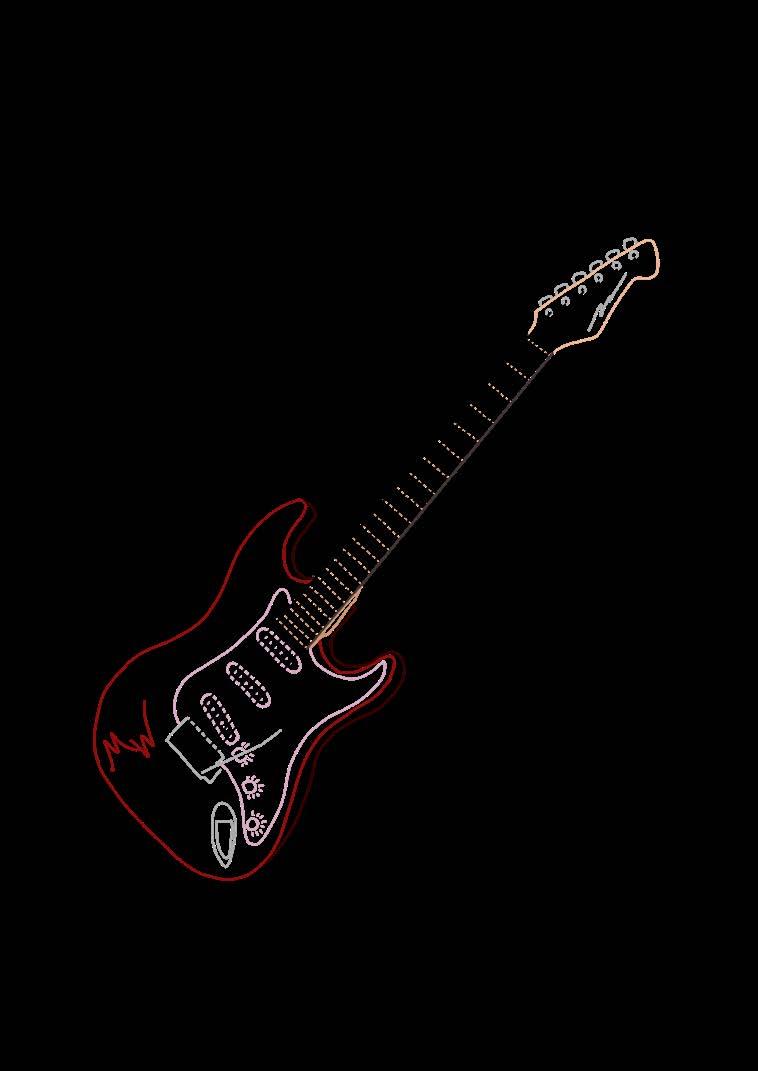
torment my whole life of this illness was an absolute S%#T Storm or, in nicer words, Harsh Weather. I co-wrote it with Luke O’Shea and being able to put the feelings of the fight that I’d been through but also the positivity that came through in the end… this song is a constant reminder to keep fighting through the storm.
Indiana: Can you give us any Headliners behind the scenes stories and insight?
Aimee: It was the most healing thing I’ve done musically and
“Indigenous people view and conceptualize disabilities as well as learning disabilities in a different manner, not through a deficit or negative lens” - John T. Ward (2025)
May Barnes, who recognises her privilege in being able to sing with her father, rock legend Jimmy Barnes, despite not seeing any musicians like herself growing up and despite the issues associated with her Cerebral Palsy that make it hard to tour. Elly-May is paying it forward by working to increase the representation of and opportunities for disabled people in music, with the help of rockstars Ella Hooper and Tim Rogers.
I remember watching Headliners first episode with a hawk-eye, wary of it potentially perpetuating the same stereotypes and fetishisation of disabled people in shows like Love on the Spectrum. Where Love on the Spectrum is oft-
mentally. Working with Elly-May, Ella, and Tim, not to mention all the special guests and the entire production team, ‘Together With Strangers’, and of course my amazing band mates in ‘Sync or Swim’ has been the most uplifting experience. It has given me back a lot of my fire that has been previously extinguished by an industry that sometimes looked at people with a disability as something different or difficult to deal with. We Can Do ANYTHING.
Indiana: In the auditions, the temporal transitions were insane! Mikky, the teen guitarist’s demeanour changed from in music form: Piano to Forte! His energy and enthusiasm took over when performing music! And James’s quote: “It’s like the tics take a seat and they just watch… It is like my medicine!” His Tics decreased and weren’t
The quote from the newly released edited book Indigenous Disability Studies highlights the experiences and insights of Indigenous individuals with disabilities, as well as professionals in the disability field. This perspective, rooted in Indigenous scholarship, reflects my own understanding of my disability.
classed as ‘kind’ and ‘sweet’ by viewers, it is hard to look beyond the show’s focus on interviews with neurotypical parents and its David Attenbrough documentary style that portrays Autistic people with infantilising narration and background music.
Headliners ticks all the boxes. It displays the authentic experiences of disabled musicians, including the unglamorous frustration with societal barriers or episodes of painful flare-ups, without a voyeuristic or pitiful undertone. At the same time, it highlights the extraordinary talents of its different disabled musicians, whose disabilities at times actually enhance their craft and make their
even there when he was drumming, it was a massive shift! It gets me wondering about how music and mental health in synergy is crazy! What are your thoughts on how music impacts mental health?
Aimee: I always say that music is the best medicine. It takes us away from whatever we may be feeling or going through at that point in time and transports us to a place that is healing — we are just doing what we love to do which is to perform.
Indiana: Can you give us any Behind The Scenes stories and insight? What was your time like working on the show?
Katherine: They really did give them the time and allowed the bands to work on their own, which is the best thing you can do for a
sounds more unique.
The musicians and crew members themselves have affirmed the positive and inclusive nature of the project and its representation on screen, as Conservatorium of Music student Indiana Zezovski has been unpacking in a series of interviews under the banner “Forget Women in STEM, what about Women is MUSIC?”. Indiana recently sat down with singer-songwriter and proud Gamilaraay woman Aimee Hannan from Headliners band ‘Sync or Swim’ and Katherine Munro, a social worker and mentor for the Headliners musicians.
Read full article online.
group of people who may have previously been underestimated. They allowed autonomy and independence for them every step of the way and really listened when us, as support workers felt like they were not being heard which was super rare.
Indiana: What was it like meeting the artists and helping support them on the show?
Katherine: I think they taught me more than I could support them. Watching them overcome their own anxieties and come together was just amazing. Especially ‘Together with Strangers’. There were a few hurdles to overcome from song choice to sound barriers to understanding of each other’s disabilities. And even as we watched James above give advice to his own band mate and I’m sure even Ella Hooper took that pearl of wisdom away with her.



Angus Fisher
As I wrote in last week’s report, I spoke at the National Day of Action for Palestine, which was organised by the NTEU and other organisations. Unfortunately, every student speaker was sent a warning letter by the university’s Student Affairs Unit, noting that the Campus Access Policy (CAP) 2024 had been breached and that any further violations would result in disciplinary action. It is incredibly disappointing that merely speaking at a rally that the university wasn’t “properly notified of” is a violation of the CAP and highlights the necessity of its removal. More to come on this.
Since there is currently no undergraduate fellow of the Senate, myself and the President of the USU had the opportunity to meet with the Chancellor and Chief Governance Officer to discuss the outcomes and happenings of the Senate meeting. The CAP was a talking point, and I raised the issue of the SAU letters and what ought to be considered appropriate notice of a demonstration. Perhaps surprisingly, the Chancellor and CGO agreed that what happened was unjust, and there is now a review over what is considered
fair notice, where I argued that posters and social media posts ought to be considered as such. Beyond that, we talked about staffstudent ratios, a canteen similar to that at UniMelb, and the upcoming election for the undergraduate fellow of the Senate.
Last week, the SRC held our third BBQ and stall of the year and also what was supposed to be our third (but in reality second) council meeting. As expected, the election was a big point of conversation in both of these forums. What was apparent is that a Dutton Liberal government would be worse for everyone except the Gina Rineharts of the nation. Last Thursday, Dutton said he would make funding cuts to the Department of Education to curb “woke” teaching. Beyond the obvious massive political overstep into education, what this means is more expensive degrees with worse teaching quality. No one, and especially students, should be voting for a Dutton PM. Put the Liberals Last. Get in contact with me if you want to join the fight in ensuring Dutton does not end up as our Prime Minister.
Shovan Bhattarai, Bohao Zhang
Wishing everyone the best of luck with your upcoming mid semester exams!
The Collective has still been hosting events, but we’ve been opting for a more relaxed atmosphere given the proximity of assignments and tests. As such, we organised a movie night during Week 5, and are planning another one for Week 7. We’re also looking into hosting study sessions to help out new students who are feeling the pressure as mid semester exams creep up.
Alongside my work with the Collective, I have been attending SRC Executive meetings on a regular basis. I have also coordinated or joined meetings with the Student
Consultative Committee, the International Student Advisory Group, and the Sydney University International House Alumni Association. At these meetings, I have been speaking up about both the activist work of the SRC and how the international student experience can be drastically improved through small changes and concessions that the University could easily implement. These include better accommodation options, such as reopening International House, better food options, such as Food Hub, and better tuition payment systems.
I will continue to speak up for international students whenever I can.
Your Education Officers have been busy in the past month!
On Palestine, we’ve seen a shocking sweep of arrests and threatened deportations in the US over Palestine activism. Mahmoud Khalil was the first high profile arrest, as a Palestinian student organiser of Columbia university. But we have seen hundreds of arrests follow, with students being snatched off the street. Jasmine spoke at a Students for Palestine protest in support of Mahmoud Khalil earlier this month. Israeli Apartheid Week was a success, with Luke speaking at the National Day of Action on 26 March. We also attended the snap action called in response to Israel’s horrific breach of the ceasefire, in which they have killed over a thousand of Palestinians in Gaza in the past 2 weeks, including hundreds of children. Importantly, in response to the repression
of Palestine activism and advocacy, the EAG hosted a working bee to write submissions to the people’s inquiry into campus free speech on Palestine. The submissions deadline has been extended to April 15.
We have also continued to work on the Stop the Cuts campaign run by the EAG. We hosted a working bee and filmed a new reel to call out the university’s $300 million surplus from last year. Be sure to keep following the campaign on our socials.
Finally, we have also been involved in some recent protests for trans rights, including the trans day of visibility rally and the protest against Trump and attacks on LGBT+ rights in the US and Australia, such as the banning of puberty blockers for trans youths in Queensland.
Don’t you know who Dana is?
Hello everyone. I am very tired. My assessment is now 6 days late, + my 7 day extension… perhaps the end is near? Only time will tell.Remember: C’s get degrees, and by God, I will get my double degree one way or another.
Other reports and bits of advice: I am in a toxic relationship with my workplace, except
Happy week 7 everyone! Just a quick one this week. As always, things have been hectic, and the fight for reproductive rights has been thrown to the forefront.
On 23rd March we protested the Day of the Unborn Child. TODUC is an annual day of mourning held by the Catholic Church, where they mourn all the “aborted babies.” Despite the terrible weather we made sure our presence was known! Thank you to everyone who came and to all our speakers.
Martha Barlow, Ellie Robertson
I’ve accidentally become an important person at work. I need to quit. S.O.S. If you’re about to date an anarchist, consider: are they annoying? The answer is likely to be yes. Remember to rejuvenate yourself. Get those spoons back up.
Shoutout big uce Vince. Go visit Art on King, all of you.
Last week we attended the National Day of Action for Palestine. This was a hugely successful rally with a fantastic turnout. Shame on the university for CAPping over 10 people for it already!
In the meantime, preparation is underway for Reclaim and Resist week from 5th-9th of May. This is going to be an awesome week full of action and education - message us if you’re keen to get involved!
Today we came to uni to be greeted by the unpleasant sight of the “abortion abolitionists” that were kicked off campus last year. We amassed quite a crowd debating/yelling at them, and were heartened to see that we vastly outnumbered them. These vile misogynists have absolutely no place on our campus - stay tuned for upcoming actions to kick them off!
This March was the hottest on record according to new data published by the Bureau of Meteorology. It’s also been a busy month, as semester 1 seriously gets under way and with it, various important activist initiatives that the Enviro officers have been a part of. These include attending and helping to build the two latest Palestine Action Group rallies, the Community Action For Rainbow Rights protest against Trump and transphobia, and the Day of the Unborn Child.
This last month has seen a massive crackdown on protest rights across the world, in particular in America. Over 3100 students have been arrested or detained, according to a report by Jewish group Jewish Voice for Peace. Mahmoud Khalil’s abduction and transportation to an unknown location has sparked outrage and fierce opposition, as have the litany of other arrests of students,
Deaglan Godwin, Lilah Thurbon
including Rumeysa Ozturk and Yunseo Chung. These arrests are a deeply concerning sign of an increasing authoritarianism in America. As students here in Australia, we stand resolutely against those arrests.
Another attack on the right to protest, which went a bit under the radar, was a court ruling in North Dakota that demanded $600 million in damages from Greenpeace for organising protests of the Dakota Access oil pipeline. The amount will likely bankrupt the organisation and is a clear threat to other activist groups that the law may be used in a variety of ways to shut them down. It is easy to draw parallels with the anti-protest laws here in NSW that involve large prison sentences and/or fines for any disruption of critical infrastructure.
Aron Khuc, Lauren Finlayson, Yoshi Leung, Leo Moore
Hello everyone! I hope everyone is handling everything well when finishing mid-semester assignments. We have been busy helping out the collectives and participating in the IWA. We had a massive turnout for the National Day of Action for Palestine, where staff and students called on USyd and other universities to cut ties with Israel and cut the CAP that inhibits activism on campus. We also started preparing for the NSW Doctors’ strike, where they have an upcoming strike for the first time in over 30 years. The NSW government has still not given nurses a pay increase, and now doctors have had enough of the government’s tactics of undervaluing and underpaying our most essential workers. We stand in solidarity with them and will be there for the upcoming rallies. More worrying, the NSW government has started giving eviction notices for residents living in social housing at Waterloo South, with the plan of privatising homes in the area. It is shameful that in a housing crisis and a cost-of-living crisis, the NSW government is evicting residents who can not afford to find accommodation elsewhere. We will be there alongside residents of Waterloo South and community organisers to protest against this on 12th April and encourage you to come along.
Emma Searle, Dana Kafina, Jessica Heap, Taleen Jameel
The far right is marching with renewed confidence globally, but regardless of the mounting draconian attacks on activism, there has been an upswell of mass resistance that we stand in firm solidarity with.
An alarming trend has been the increasing power of Trumpian politics around the world as he slashes diversity and inclusion programs, reverses hard-fought for rights and prepares for a new, more cut-throat, age of imperial militarism.
As the White House posts sickening videos parading their pro-genocide goals to turn Gaza into the ‘Riviera of the Middle East’, Isreal broke the ceasefire agreement on the 18th of March. UNICEF has announced that, as of the 1st of April, Israel has killed 1002 people in Gaza; 332 of them being children. Against this backdrop, there has been a serious offensive on those who speak out against this brutality with the leading pro-Palestine activist at Columbia University (the first of the universities to set up the Gaza Solidarity
Encampments in 2024), Mahmoud Khalil, being kidnapped by ICE agents and threatened with deportation despite his citizenship. In response, there has been an inspiring outburst of protests to defend free speech and the rights of immigrants. In response, we have attended the snap rallies for Palestine and against the attacks on trans rights by Donald Trump.
There have also been historic mass protests in Turkey and Serbia against corruption and for greater democratic rights. Tens of thousands are marching in Turkey against the arrest of opposition candidate Ekrem Imamoglu, and it has grown into a wider struggle for democracy, education and healthcare. Similarly, 325 000 protested in Serbia against austerity, cornercutting and corruption in memory of the railway station crash that killed 15 people.
These mass movements inspire our activism in the Global Solidarity collective as we fight against the far right offensive here, in Australia.

If your landlord (or their agent) lives in your home, it is likely that you are considered a boarder or lodger. There are some “principles” that outline your rights and responsibilities.
1. State of premises
Your home should be clean, in good repair, and be reasonably secure.
2. Rules
There may be rule, e.g., how much notice you have to give to move out, when you can have visitors, or how noisy you’re allowed to be. You should know what the rules are before you move in. Consider these carefully when you decide if you want to live there.
3. Penalties prohibited
You cannot be fined for breaching the rules of the house. This does not mean you do not have to pay to repair something you have broken.
4. Quiet enjoyment of the premises
The landlord cannot stop you from occupying and “enjoying” your room, or using the common areas of the house as long as you do not interfere with the same rights of others. This does not mean that others in the house cannot make noise.
5. Inspections and repairs
The landlord has to maintain the home in good repair, which includes being able to inspect your room. This can only happen at a “reasonable” time. For example, they cannot clean your room at 3am. However, if the landlord thought your room might be on fire, e.g., they could see smoke or feel heat, the landlord can enter your room without notice.
6. Notice of increase of occupancy fee
The landlord can increase the cost of your room if they give you at least four weeks’ notice.
7. Utility charges
The landlord can charge you for utilities (electricity, gas, water and oil), if you were told when you moved in that you would be charged, and the charge is based on the actual cost with a “reasonable” approximation of your share of the bill. For example, if the bill for your four person apartment was $200, you should not be charge $150. Be aware that running an electric fan or bar heater
uses a lot more electricity than an oil or gas heater.
8. Payment of security deposit
The landlord can ask for a security deposit, sometimes called a bond, of not more than the equivalent of two weeks occupancy fee (rent). Make sure you get a written receipt, even if you paid by bank transfer. When you move out they must return this deposit, minus the cost of repairing any damage you or your guests caused, within 14 days. To avoid paying for someone else’s damage, make sure that you take photos of any damage present when you move in, and lots of photos of the room in good repair when you move out.
9. Information about termination
You should know how much notice they need to give you to ask you to move out. They must also give you a reason to leave.
10. Notice of eviction
The landlord cannot evict you without “reasonable” notice, in writing. Reasonable notice can be different amounts of time depending on why you are being evicted. For example, if you are a threat to the wellbeing of the other residents you might only get a couple of days notice, but if you are being evicted because the landlord wants to renovate your room, that notice period should be much longer.
11. Use of alternative dispute resolution
If you have a dispute with your landlord you both should use a “reasonable” dispute resolution mechanism, e.g., a Community Justice Centre or the NSW Civil and Administrative Tribunal.
12. Written receipts
The landlord must give you written receipts for any money you pay, including occupancy fees (rent), security deposit (bond), or bills. Get this in addition to any record you get from your bank for electronic bank transfers. Take a photo of each receipt and email it to yourself, so you always have a copy.
If you have any questions about your rights and responsibilities as a boarder/lodger or tenant, please contact an SRC Caseworker.
SRC Caseworker Help Q&A
English Language Resources
Abe,
My English is not good. I would like to update to solve my problem. What can I doing?
XW
Dear XW,
The easiest way to improve your English language skills is to speak English as much as possible. Ask

your friends to speak English to you so that you have a safe environment to practice listening and speaking English. After a while it will get easier to understand what is said in class and hopefully, you’ll get the confidence to speak in your tutorials. The SRC has a list of English Language Resources for you to consider. Abe.
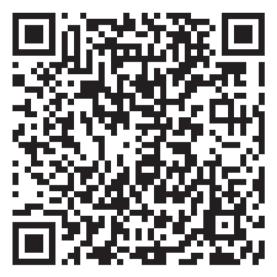
you need help from an SRC Caseworker start an enquiry on our Caseworker Contact Form:
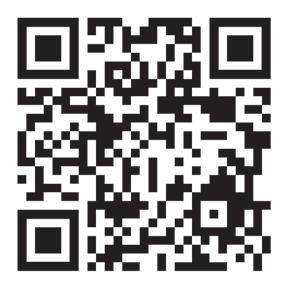
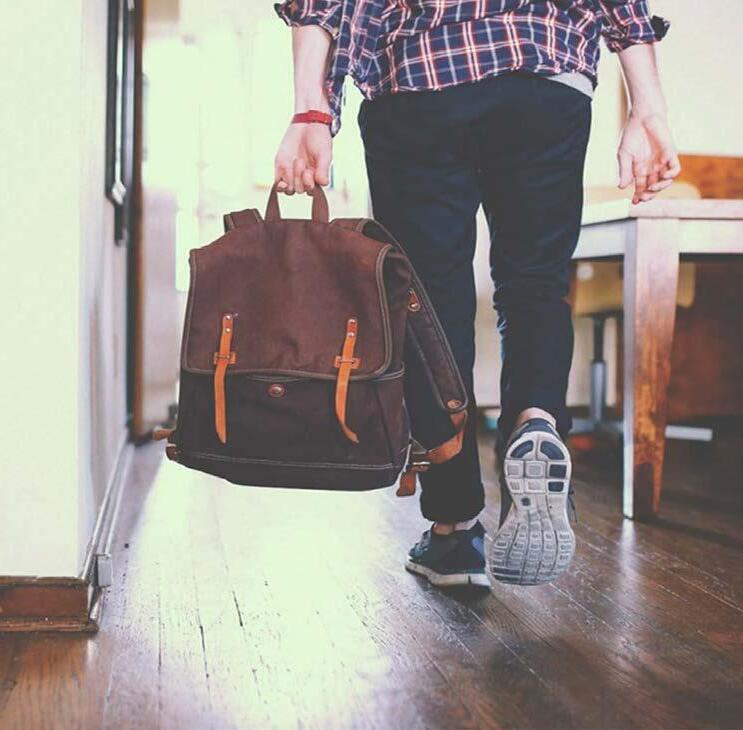


2 Six-legged social worker (3)
4 Bohemia’s Capital (5)
6 School of philosophy with no classes (7)
8 Menial click work (9)
1 ___ to grind (5)
2 Simple data structure (5)
3 Use your brain (5)
4 Wandering pig (9)
5 Bodies in belts? (9)
Week 6 Quick Crossword Answers
10 Author of Discworld (5)
11 Found at Oz Turk or UniBros (5)
13 Best SRC Collective (5)
14 In the sticks (5)
15 Mexican painter (5)
17 “You shall not pass!” (5)
6 Refrain of La Marseillaise (7)
7 Springfield Nuclear Boss (7)
8 Cul-___ (5)
9 Tiny toyota (5)
10 One half of alleged Chinese spyware (3)
18 Whinges (9)
20 Sea nypmhs (7)
21 Indian flatbreads (5)
23 German elective monarchy? (3)

12 Sheep sound (3)
16 Winfrey the TV mogul (5)
17 French province bargained over in 1444 (5)
19 You are here to do (5)

Across (by individual row): SOS, Donor, Cubical, Mods, Kias, Bide, Dyad, Zone, Pig, Flag, Asia, Play, Knob, Clad, Ekes Out, Stows, Ail Down (by individual column): Honi, Sobs, Sock, Dude, Raid, Codeine, Layflat, Minsk, Salad, Boa, CIA, Day, AOKS, Plus, Beta, Cowl, Soit
Week 6 Cryptic Crossword Answers
Across (by individual row): Awful, Barbie, Offspring, Respite, Manticore, Lizard, Petri, Yellow, Exams, Famished, Lacrosse, Ether, Tubular Down (by individual column): Informally, Mass, Mini, Full Stop, Liability, Appealing, Prior, Green, Dew, Deadly, Manic, Lament, Sudoku, Nessa, Sane
Victor Zhang delves into the (recent) archives.



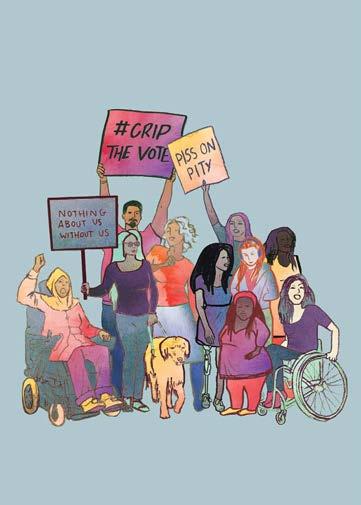

“This is a Disabled Honi. This is a Honi with disability. This is a crip Honi. This is a mad Honi. This Honi diverges from expected norms. This Honi prefers alternate forms of communication. This Honi can’t get into most buildings or bathrooms or parking spaces. This Honi fights inaccessibility. This Honi leaves no body behind. This Honi is non-compliant. This Honi kills fascists. This Honi surrounds hate and forces it to surrender.”
2018 Disabled Honi Editorial by Robin Eames
Words true now as they were in 2018.
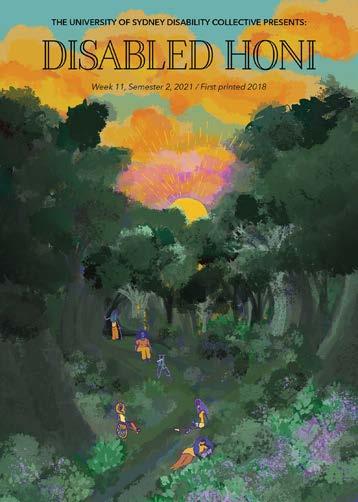




Ones that
and
(y’know like the definition of a door)



(Ask Chris Minns)

Brand new disorders droppin’
For when you’re undiagnosed and there are no psychiatrists left in NSW.
(Ask Ryan Park and Rose Jackson)

1st Prize (Fiction & Non-Fiction) $2000
2nd Prize (Fiction & Non-Fiction) $700
3rd Prize (Fiction & Non-Fiction) $250
Editors Choice(Fiction & Non-Fiction) $50 All Sydney Uni students are invited to enter a fiction or non-fiction piece (or both) on the 2025 theme ‘artificial’
